October 25 - 31, 2015: Issue 237
Pittwater Regatta Air Race Trophies: from 1934 and 1935 and The Pilot Who Saved William Hughes
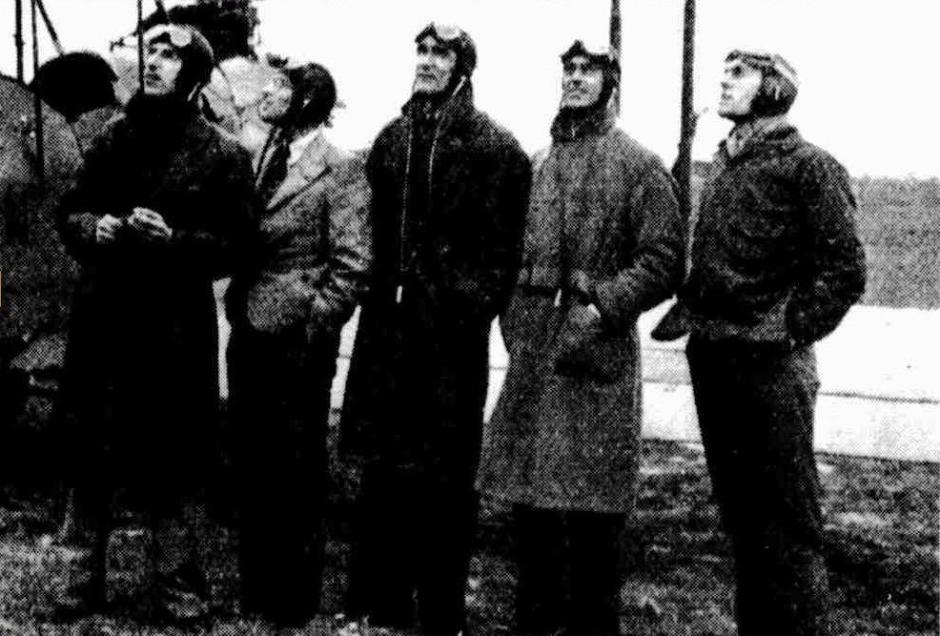
Above :Pilots watching the display at Mascot. From left to right: J. J. Larkin, L. N. Schultz, J. McLaughlin, G. W. Sawtell, T. R. Swain.
Empire Air Day — Displays at Mascot and Richmond.
The celebration of Air Day on Saturday last was general throughout the Empire, and the various Stales of the Commonwealth Very appropriately recognised the occasion. In New South Wales the displays at Mascot and Richmond aerodromes were somewhat marred by the inclement weather; but nevertheless at both places a large number of spectators were thrilled by a display of machines and aerobatics well calculated to create that interest and air sense in the Australian public which was the object of the demonstrations.
The Air Fleets of the Powers
The graphs and diagrams on the right are of particular interest just how in view of Mr. Stanley Baldwin's announcement in the House of Commons on Wednesday last that by March, 1937, the home strength of the Royal Air Force Would be increased to 1500 first-line machines. This expansion will require 2500 additional pilots and 120,000 other ranks, and will mean the creation of 71 squadrons, or, as will be seen by the graph, the addition of 920 machines to her present air fleet.
Left :Moth 'planes of the New South Wales,-, Aero Club starting out from Mascot for a flight over Sydney. Empire Air Day. (1935, May 29).Sydney Mail (NSW : 1912 - 1938), p. 17. Retrieved from http://nla.gov.au/nla.news-article166108730

Gypsy Moth aeroplane flying near stern of Gwydir, Creator: Hood, Sam, 1872-1953 Pic No: hood_06535, Courtesy State Library of NSW.
Formation display and aerobatics In formation.3.45 p.m.: Pilots, Flight-Lieuts. N. Mulroney, T.R. Swain. R. M. Hirst. Air attack on man o'.war.-4 p.m.: Location, vicinity of flagship; pilots, Flight-Lieut. N. Mulroncy, T. R. Swain. PITTWATER REGATTA. (1936, December 24).The Sydney Morning Herald (NSW : 1842 - 1954), p. 14. Retrieved from http://nla.gov.au/nla.news-article17299640
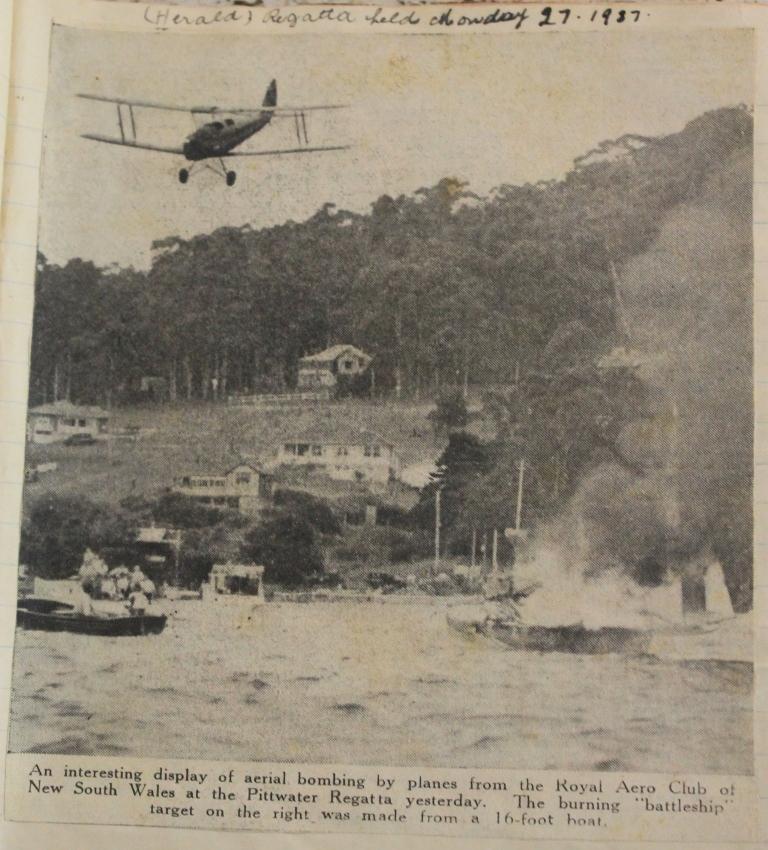
Last one prior to WWII
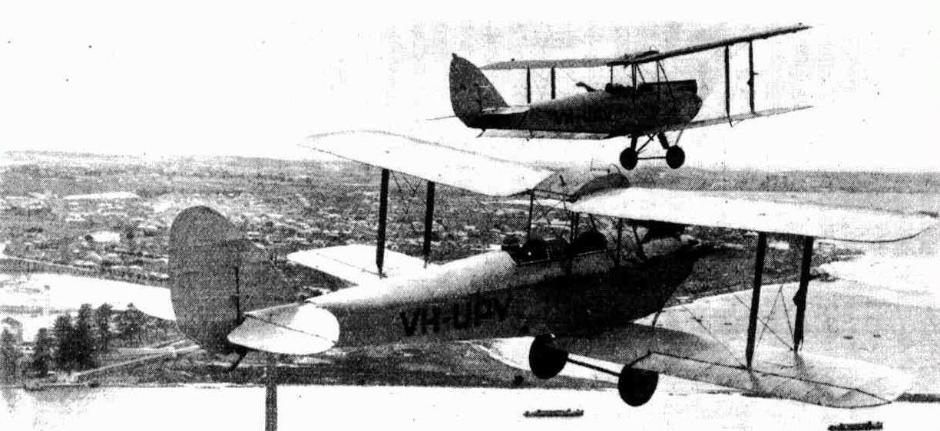
Empire Day 1935 Moths VH - UFV, being flown by N. Mulroney and ?? - what the boys were looking up at, from: Empire Air Day. (1935, May 29). Sydney Mail (NSW : 1912 - 1938), p. 17. Retrieved from http://nla.gov.au/nla.news-article166108730
A few weeks ago a Queensland reader of Pittwater Online News sent in a remarkable photograph of a trophy from the 1935 Pittwater Regatta. The gentleman, Stephen, is an avid Collector of Aviation material and memorabilia and a Member of the Aviation Historical Society of Australia: www.ahsa.org.au, a fantastic society and one of the places we visit when researching anything to do with flying in Australia or to find out more about any of Pittwater's several pioneer aviators.
Sydney Meetings are held on the first Wednesday in every month at 7.45pm at Studio 1, Powerhouse Museum, entry from Macarthur Street end. Visitors are welcome and you can contact Paul Ewoldt at paul.ewoldt@hotmail.com for more details or visit their website - you will be there for a while!
To Stephen's excellent sharing with all of us two trophies from his Collection of Australian Aviation of those wonderful Pittwater Regattas. As you can see, these early fliers were members of the Aero Club of New South Wales.
After World War I there were several people who returned from serving on overseas theatres of conflict who had been part of those relatively new-fangled contraptions - flying machines! Although WWI demonstrated conflicts now included war being taken into the air, having long been fought on land and on sea, the use of machines of the air brought with it wonderful possibilities, especially for Australia - isolated by distance from the rest of the world, and even within its realm, isolated by distance once again in the once extreme lengths of time and miles or kilometres to be travelled to get from anywhere to anywhere, especially for our rural Australians. In First to Fly in Australia at North Narrabeen we related how the first personed flights in Australia occurred at North Narrabeen:
GLIDING AT NARRABEEN. SUCCESSFUL FLIGHTS.
Five members of the Aerial League have established a camp at Narrabeen Heads. It is called the "Lillienthal Camp." On the 5th inst the first flight in Australia,- with a heavier than air machine was made on a biplane 18ft long, and a number of other successful flights have since been achieved.
At the commencement of the latest flights the wind came from the north-east at a pace of only three knots, hardly sufficient to give the necessary lift to the machine. A few attempts were made, but they wore too short and too close to the ground. The wind, however, increased in volume, and at 6 o'clock a 15-knot breeze was coming from the north-east. As the machine was wheeled face on, it shot up with Mr. Taylor to a height of 25ft, and soared the full length of the course. The demonstrator, by means of the-elevating plane, brought the machine rather sharply to the ground at the water's edge. Tho second flight was even more successful, the machine during its course actually poising for about 10 seconds, owing to its being tilted at an angle that for a short time allowed the wind to counterbalance the soaring tendency. GLIDING AT NARRABEEN. (1909, December 14). The Sydney Morning Herald (NSW : 1842 - 1954), p. 9. Retrieved from http://nla.gov.au/nla.news-article15095638
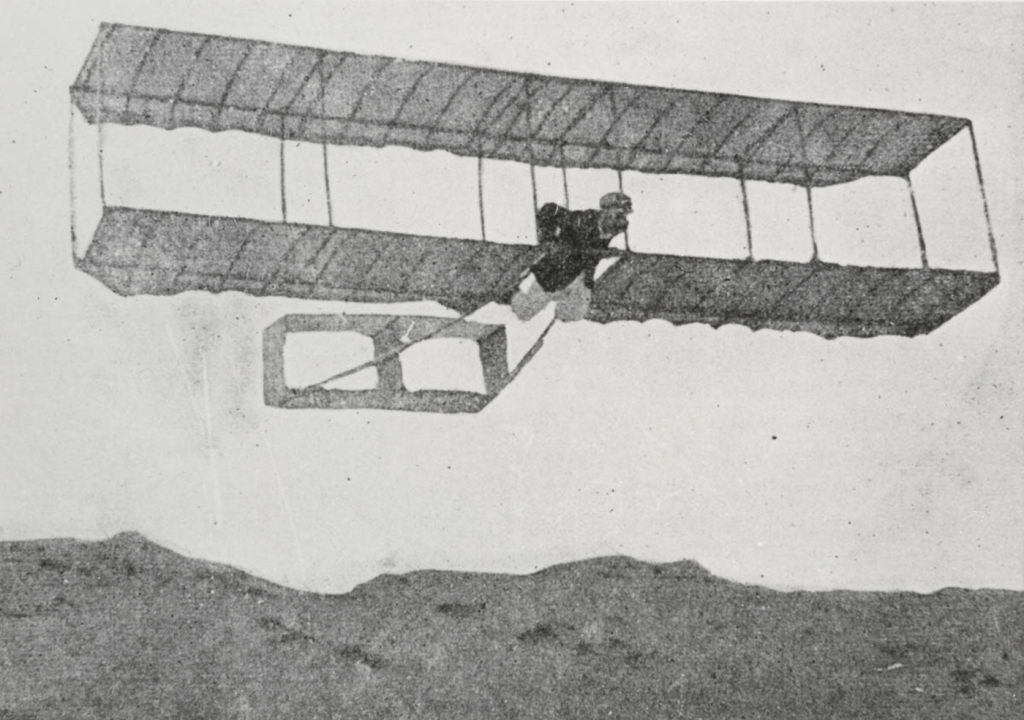
George Taylor at Narrabeen. Picture no a 1383001h, courtesy State Library of NSW
GLIDING AT NARRABEEN. SENSATIONAL INCIDENTS. AN AUSTRALIAN-BUILT MACHINE. On Sunday last Mr. George Taylor, secretary of the Aerial League, took a biplane,18ft long, with 4ft planes, and box-kite tail balance, to Narrabeen. The trials at gliding were held, Mr. Taylor himself acting as demonstrator. The scene of the flights was at Narrabeen Heads, in the presence of about one hundred visitors, the wide stretch of sand rendering any possible fall a matter of some safety. At the beginning of the experiments the wind came from the south-east at 10 miles an hour. The machine was carried to a sand knoll, and brought face on to the wind. Messrs. Schultz, Le Clerc, and Gibbons, of Narrabeen, required all their strength to hold it down. For the preliminary flights the corners were held by guide ropes 15ft in length to prevent the machine from getting out of control before the experimentor was properly tuned to automatic balancing.
At the signal to let go the machine was well lifted by the wind, and by careful manipulation on the part of Mr. Taylor it shot towards the ocean 98 yards away in a series of curves from 3ft to 15ft above the ground, dragging its guides, who, however, pulled it to the ground at the water's edge. Twenty-nine successful flights were made by Mr. Taylor and Mr. Hallstrom, an enthusiastic member of the Aerial League. As the afternoon wore on the flights improved on account of the wind freshening to 15 miles an hour, and coming directly from the east so much so that the last flight of the day was notable.
At "let go" the wind immediately lifted the machine to the full length of the guide ropes, and dragged the operators so fast to the ocean that two let go; the machine now soared to-wards the ocean, and at the water's edge the remaining guide ropes were loosened, the machine making a leap upwards. Mr. Taylor by careful manoeuvring, kept the machine well under control, and dived it in the sea some little distance from the heads. The machine will be fitted with steering gear and other improvements for further flights. Mr. Taylor's monoplane is now having its powerful engine fitted to it at Gibson and Son’s motor works at Balmain, and he hopes to have it in the air during Christmas week. If the flights are as successful as anticipated the machine will be placed at the disposal of the military authorities during the Kitchener camp and review. GLIDING AT NARRABEEN. (1909, December 7). The Sydney Morning Herald (NSW : 1842 - 1954), p. 3. Retrieved from http://nla.gov.au/nla.news-article15096414
The 'Mr Hallstrom' mentioned here is Edward Hallstrom, the gentleman who began the Koala Park at Bayview and was later associated for so long with Taronga Zoo.
This little episode was followed by the 1910 visit of Joseph Joel Hammond, a New Zealand born gentleman who would inspire many a young Australian man to follow in his footsteps and head to England to learn how to fly through the then Aero Club, soon to become the Royal Aero Club. He showed people how to fly in Perth, Melbourne and by April 1911 was in Sydney:
THE HIGH FLYER COMES TO PERTH. 'PILOT AVIATOR' HAMMOND WILL AEROPLANE HERE.
A long man and spare of build, with sharp features, blue eyes- and fair hair, Mr. J. J. Hammond, who arrived from London by the R.M.S. Omrah yesterday, was discovered by our representative to carry in his card case paste-boards showing him to be a 'pilot aviator' certificated by', the Aero Club de France and Royal Aero Club of England:
A 'pilot aviator' would ordinarily supposed to be some rare sort of bird or at least to have the eagle eye and fierce, aspect of a king of the air. But Mr. Hammond is mild in appearance, milder in manner, and might easily be taken or mistaken for one who walked the earth in easy peace and wanted no hazardous or adventurous experiences anywhere, certainly not a mile and a half- sky-high. But when he produced his credentials we found that he is familiarly known in the 'Aero Press' as 'The High Flyer' that he has done a power of aeroplaning in France and England, has been above 5,000ft. In the coldest weather, has flown 180 miles non-stop in 3 hours 37 minutes, .and is now attached as ‘pilot aviator’ to the Australasian staff of the British
and Colonial Aeroplaning Company, of which Sir George White, of Bristol, is chairman. It appears, that a ‘pilot- aviator' is a certificated expert, whose relation to the airship is the same as that of a captain to an ocean-going vessel.-None other may drive aeros carrying passengers or drive at all where there is any danger involved to the public. If a novice, will go into the wilderness and risk his neck on an aero, well, who may stand between him and his folly?
Our aviator is a New Zealander, a married man, and has been four years in Europe, of which fifteen months have been devoted to aeroplaning. The purpose, of the present visit is to introduce the Bristol aeroplane (of the Farman type) to Australasia. He is accompanied by two mechanics! They have with them two machines, and these are being followed by engines for others. The 'engines are of the Rotary Gnome' type, . arid--must be worth the inspection of engineers, for they weigh 168lb over all, are 50-h.p.,do 1,275 revolutions,- and cost £600. Aviation is certainly an expensive hobby, because, the Bristol aeroplane log price, all complete, runs into £1,100.During a short stay here, Mr. Hammond will have his aeros put together, and will make several flights, carrying one, two, or three passengers. He speaks lightly of the risk of flying, saying there is but little in a reasonable speed of wind, which is 'also steady. ? Yet he is hardly consistent when he adds ' that 'the driving of an aero gets on' the' nerves of the pilots after some years of service, and they retire to gaze upon the machines from the solid earth. Racing and high-speed trials in bad weather conditions, probably account for most of the nerve-racking, but he says it undoubtedly exists., One can easily imagine it when men get losing themselves in the' clouds at -a' height up to nearly 10,000 feet, -; which is the present record and when any moment a malevolent wind gust and a defective steering gear may turn the aero turtle. The Vol Plane, -which consists of rising to a good 'height and stopping the engines dead, depending upon the steering to descend in graceful' spiral fashion to the earth, is said, by Mr. Hammond to be the very poetry of the flying game, and to be delightful to watch as well as to experience. He will introduce it in his exhibition, which will be announced in due course. "THE HIGH FLYER.". (1910, December 14). The Daily News(Perth, WA : 1882 - 1950), p. 3. Retrieved from http://nla.gov.au/nla.news-article76826589
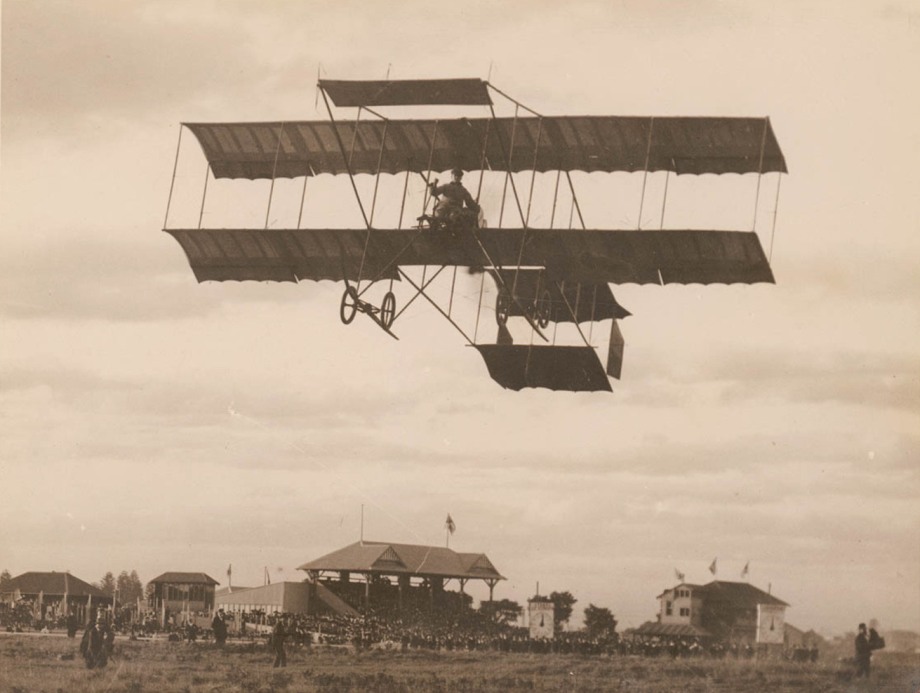
J.J. Hammond and Boxkite plane, at Ascot racecourse Botany, Sydney, Tuesday 18th of April, 1911. See: HAMMOND THE FLIER. (1911, April 13). Evening News (Sydney, NSW : 1869 - 1931), p. 13. Retrieved from http://nla.gov.au/nla.news-article114132565 Image No.: a169002, courtesy State Library of NSW - taken by Sam Hood. Album Title: Hood Collection part II : [Aviation]
AUSTRALIAN AIRMEN - TRIUMPHS IN ENGLAND - RETURN TO VICTORIA
There they stood chatting with relatives, who had come to meet them. They were on the deck of the R.M.S. Maloja — Henry Hawker and Henry Kauper, the heroes of "The Daily Mail" competition flight around Britain, which was nearly successful. Two of the best types of Australians; men who set out from their homes to do things, and did them.
It was in March, 1911, that four Australian argonauts set sail for England to become aviators — Henry Hawker, Henry Kauper, Henry Busteed, and E. Harrison. And they won success. Busteed is now the chief pilot for the Bristol Aeroplane Company, made famous in Australia by the lights of Hammond, the New Zealander. Harrison holds the position of Chief Instructor to the Federal Defence Forces. Hawker and Kauper gained fame in "The Daily Mail" flight, and Hawker holds, or did hold when he left England, all the British records for aviation. None of the four is old; Hawker is 22 and Kauper 23.
Hawker has a spare figure, brown eyes, and black curling hair. His appearance inspires confidence, and indicates an unconquerable spirit.
Kauper is heavy, with rugged features and the stolidity of expression of that class that is always "the reliable second in command"; not a leader, but the invaluable "power behind "the throne." Enthusiasm would always find in Kauper the steady drag anchor of caution.
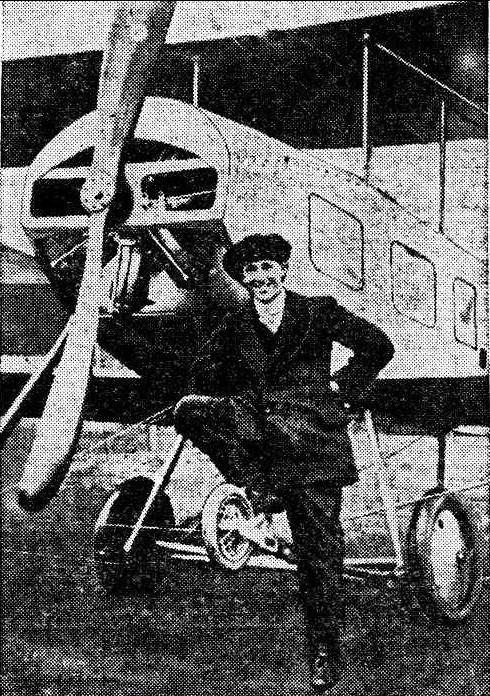
HENRY HAWKER AND HIS MACHINE
Unconsciously Kauper epitomised himself. , Asked if he were a licensed pilot, he said, "No.1' "Would it take him long to be one? . Oh, no just sufficient time to go through the tests- "I stuck to the mechanical business all through; it seemed to me to be a steadier thing." • He is blue-eyed and fair, but in Australia we know that he shared with Hawker the perils, triumphs and accidents of the round Britain trip. To him it would be part of the day's work—to Hawker the poetry of sailing higher than another and the lyric of the wild bird swoop over British hamlets would be the incentive.
"What do you wish me to say?" was Hawker's reply to a pressman. "I worked for the Sopwith Company until I left, but we are not with them now. I intend to make a few flights in Australia, and have brought a small Sopwith plane with me. It has a span of 26 feet and a 80 h.p. Gnome engine."
Will you loop the loop?
"Yes, if I give an exhibition. Looping the loop had often been done by airmen before Pegoud but generally accidentally. I think that Pegoud was the first to do it intentionally, and he deserves all credit for it."
Do you think that the spread of the planes on your machine will be too small' for the Australian atmosphere?
"Not at all. You don't need to worry about the air. They said the same regarding South Africa. It is just the same as the talk about air pockets and that sort of thing. The air can get very like water when it is rough. That is all it is."
He spoke with the confidence of a man who has never had an accident, but he has. He was asked whether he believed that, after an accident, an airman lost his nerve, and was never much good afterwards.
"That's all nonsense. If a man has a fall from a bicycle, it does not stop him riding, does it? I fell 250 feet vertically, and the plane went three feet into the ground; but I don't feel any different."
Fault of the machine?
"No, my own fault," was the reply, somewhat abruptly.
Referring to the report that he was going to enter for the next "Daily Mail" prize, Hawker said that he was not sure whether he would; at present he did not think so.. "There are far better prizes to be won than "The Daily Mail.' Because It is a newspaper it gets greater prominence; but the Gordon Bennett Cup is far more worth winning. And other prizes are offered from time to time in France and Europe."
Eminence in flying is, Hawker considers, attained by experience and knowledge of machinery. He is a skilled mechanic himself; he must, feel somewhat of a mystic mechanic.
Kauper spoke of the licenses issued by the Royal Aero Club. "It would cost from £50 to £70 to obtain a pilot license in England. Those are the charges made by companies to teach driving. The license from the club, after the examination has been passed costs only £1. The Royal Aero Club is recognised all over the world. Besides, there is a Federation of Aeronautics, and if Hawker makes any records here they will be entitled to recognition; we are members."
Both the airmen speak enthusiastically of the treatment that they received from the British. "The fact that we were Australians seemed to open many doors to us," remarked Hawker. "I think that it is because we are less gi*ooved than the British, and not so restricted in our outlook when we are young."
- Hawker is a native of Balaclava, where his people reside. Kauper was born at Auburn, but his folk are farming at Healesville.
A reception was given to Mr Hawker, on January 19, at the St. Kilda Town Hall. Cr. E. O'Donnell, Mayor of St. Kilda, presided over an assembly of councillors and representative citizens. The toast of the guest was proposed by the Mayor, who alluded to Mr. Hawker's brilliant career and the sterling qualities that helped him in his great achievement in the flight around Great Britain. He stood for all that was best in young Australian manhood, and was a worthy model for ambitious Australians to copy. Mr. Agar Wynne (the Postmaster General), Mr. A. Robinson, M.L.C., and Mr. R. G. M'Cutcheon, M.L.A., also spoke. Mr. Hawker briefly replied. AUSTRALIAN AIRMEN TRIUMPHS IN ENGLAND. (1914, January 24). Weekly Times (Melbourne, Vic. : 1869 - 1954), p. 8. Retrieved from http://nla.gov.au/nla.news-article129943584
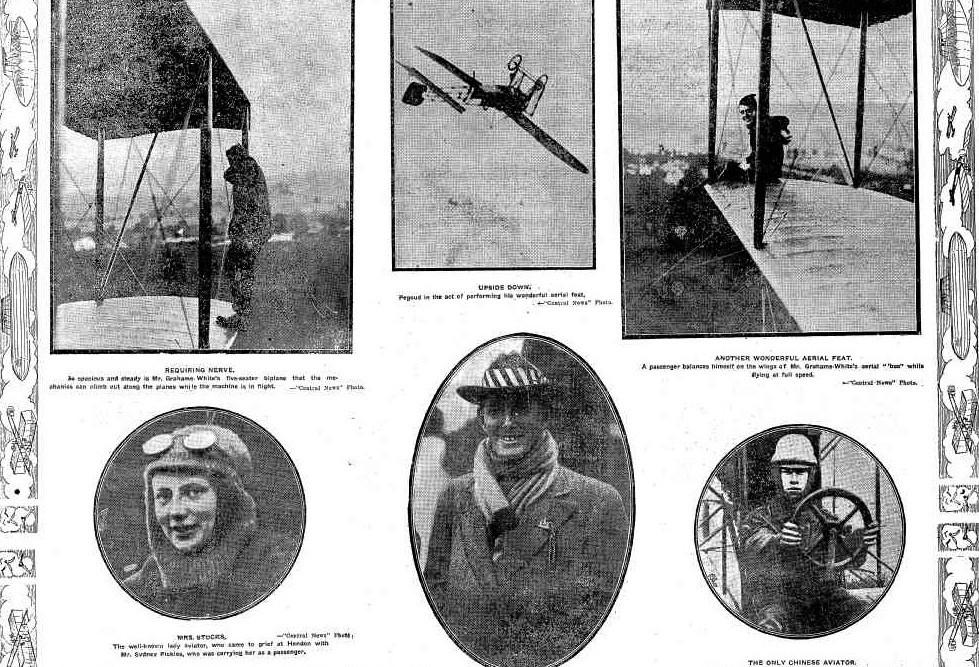
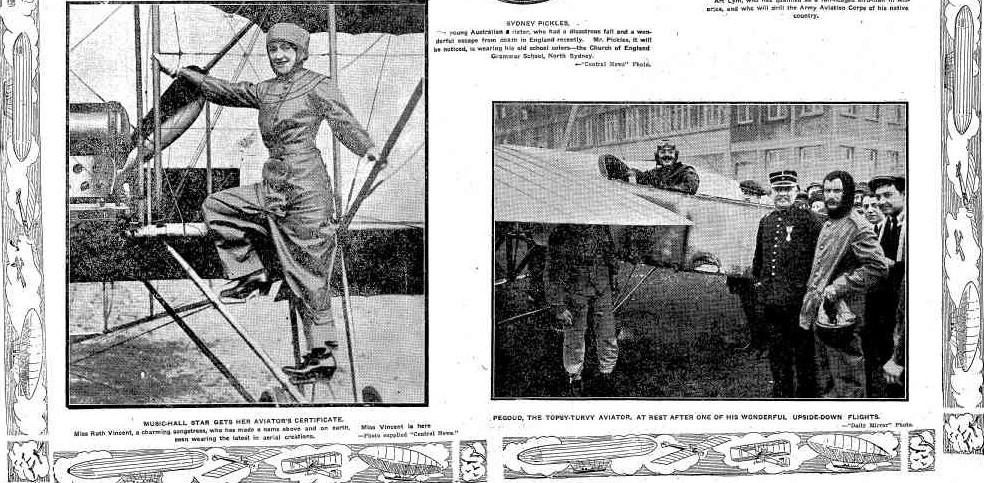
REQUIRING NERVE.
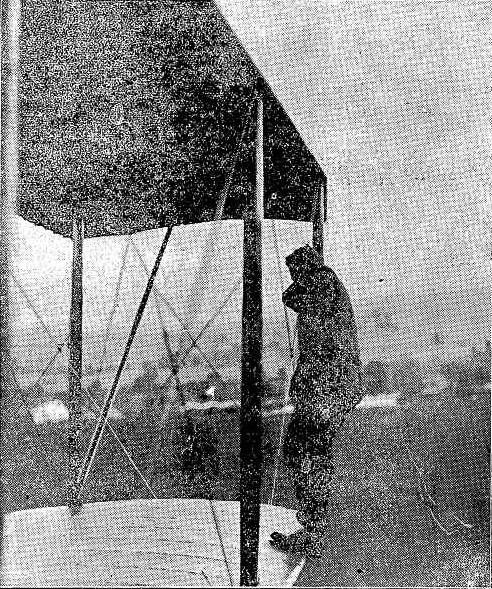
So spacious and steady is Mr. Grahame- White's five-seater biplane that the mechanics can climb cut along the planes while the machine is in flight. —'Central News' Photo.
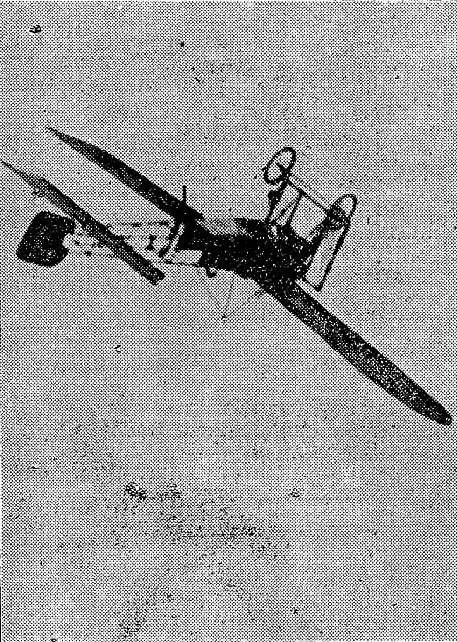
Upside down; -Pegoud in the act of performing his wonderful aerial feat. 'Central News' Photo.
ANOTHER WONDERFUL AERIAL FEAT.
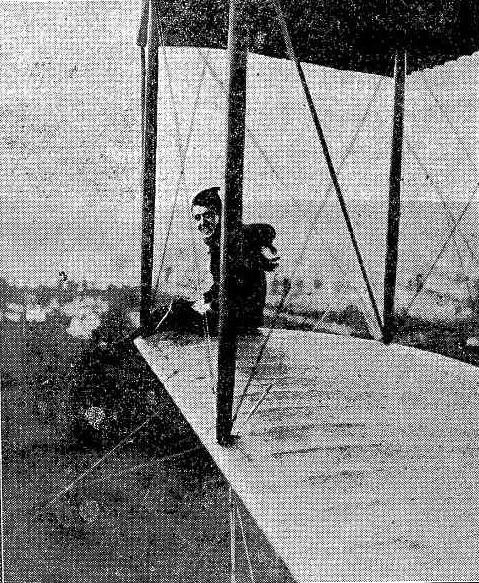
A passenger balances himself on the wings of Mr. Grahame-White's aerial ''bus' while flying at full speed. -'Central -News' Photo.
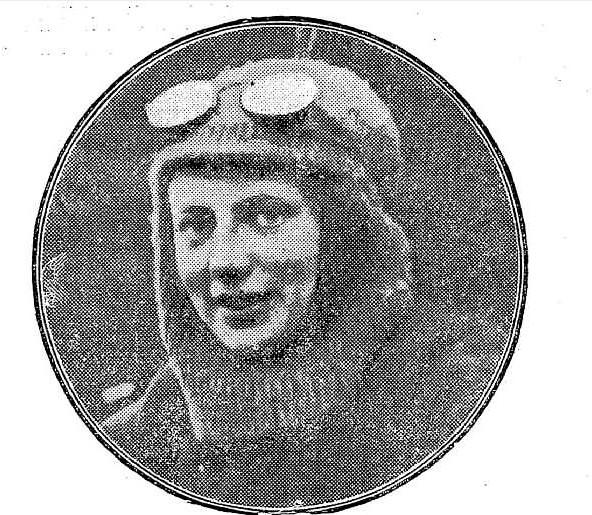
MRS. STOCKS, The well-known lady aviator, who came to grief at Hendon with Mr. Sydney Pickles, who was carrying her as a passenger.—'Central News' Photos ;
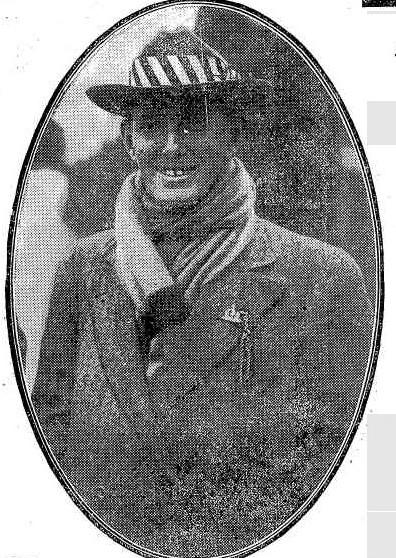
SYDNEY PICKLES, -young Australian aviator, who had a disastrous fall and a wonderful escape from death in England recently. Mr. Pickles, it will be noticed, is wearing his old school colors — the Church of England Grammar School, North Sydney.—Photo: 'Central News'
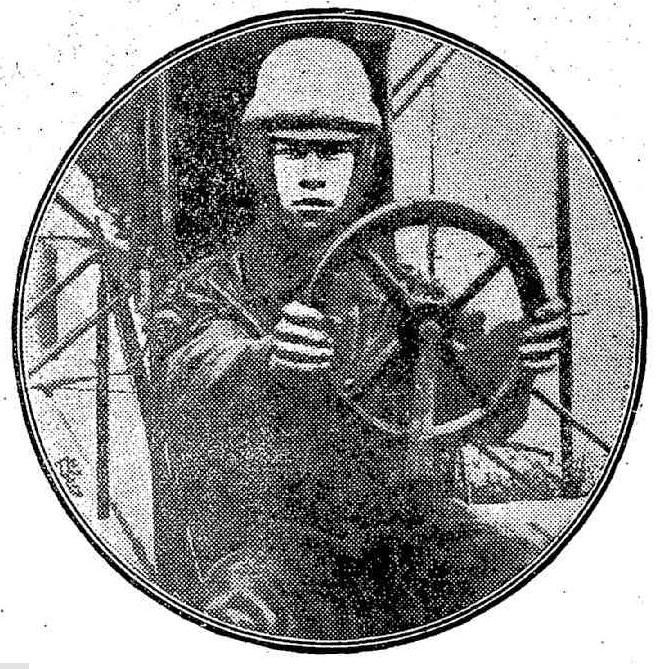
THE ONLY CHINESE AVIATOR. ,Art Lym, who has qualified as a full-fledged bird-man in America, and who will drill the Army Aviation Corps of his native country.
MUSIC-HALL STAR GETS HER AVIATOR'S CERTIFICATE.
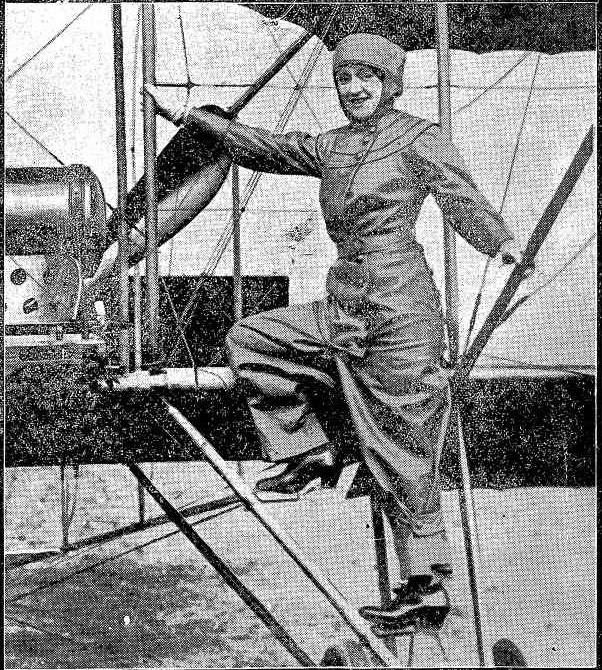
Miss Ruth Vincent, a charming songstress, who has made a name above and on earth. Miss Vincent is seen here wearing the latest in aerial creations. -Photo supplied “Central News”.
PEGOUD, THE TOPSY-TURVY AVIATOR, AT REST AFTER ONE OF HIS WONDERFUL UPSIDE-DOWN FLIGHTS.
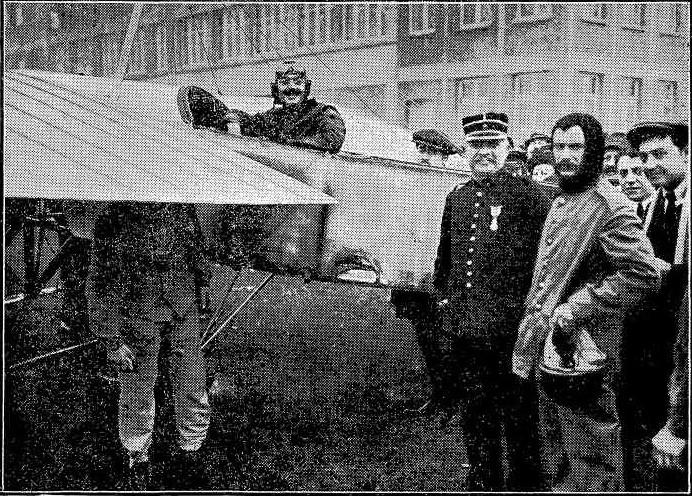
No title. (1913, November 2). Sunday Times (Sydney, NSW : 1895 - 1930), p. 3 Supplement: SUNDAY TIMES GLOBE PICTORIAL. Retrieved from http://nla.gov.au/nla.news-article126317767
It is the notion of Defence that began Australia's foray into the world of aviation on a larger scale and to develop a Flying Corps here:
Australian Flying Corps. AVIATION SCHOOL TO BE FOUNDED.
The Minister for Defence (Mr. Pearce) some little time ago, acting on the advice of the Air Office, ordered monoplanes and two biplanes. These are expected to arrive next month. A military aviation school will be established at Duntroon, close to the military college. Two aviators have already been appointed; One is an Australian, whilst the other has had Australian experience. Two more aviators have still to be appointed. As soon as all is ready volunteers will be called for from the military establishment to attend an instructional course at Duntroon, which will last about four months. From this school successful members will graduate to the Australian Flying Corps. Three schools will be held each year and regulations are now under consideration for the governing of the new branch of service, and to fix special allowances. Provision will also he made for men who may be the victims of accidents. These four aeroplanes are to form the nucleus of a new establishment which will be increased as thought advisable. Australian Flying Corps. (1912, July 13). The Beverley Times(WA : 1905 - 1977), p. 7. Retrieved from http://nla.gov.au/nla.news-article206507176
AEROPLANE SQUADRON. AUSTRALIAN. FLYING CORPS FORMED. MELBOURNE. October 23.
Lieut. Harrison, an Australian-born flyer, has been appointed to the Australian Flying Corps, at £400 a year, to the position rendered vacant by the resignation of Lieut. Busteed. Lieut. Harrison is 26 years of age, a single man, and he is described in England as an intrepid "birdman." Lieut. Petre., who has been appointed to the other-position, is a solicitor by profession, 27 years of age, and has had experience in the design, construction and working of aeroplanes. It is expected that the four aeroplanes recently purchased by the defence authorities at £800 will be shipped from England during the next few weeks, and the airmen will probably accompany them. Official sanction for the formation of the Australian Fiving Corps was given today. The unit consist of an "aeroplane squadron" its complete personnel will comprise four officers, seven warrant officers, and sergeants, and 32 mechanics, or a total of 43 men. The corps will form part of the citizen forces, and enrolment, which will be voluntary, is to commence from January 1 next. AEROPLANE SQUADRON. (1912, October 24). The Journal(Adelaide, SA : 1912 - 1923), p. 4. Retrieved from http://nla.gov.au/nla.news-article199899855
AUSTRALIAN FLYING CORPS. INSTRUCTOR'S ARRIVAL. FREEMANTLE. Tuesday
The passengers by the R.M.S Omrah, which arrived today, " included Mr H. Petre, who was recently appointed by the Commonwealth Government as instructor to the military aeroplane corps. When interviewed, he said that France was still a long way ahead of the other nations in aviation matters, but while England was slow she had produced some very fine machines, the War Office aeroplane being regarded as the best in the world. It is these machines That have been ordered by the Commonwealth. Asked whether he thought airmen would succeed in crossing the Atlantic, he said that he thought it very probable, and that the next few years would see it accomplished. Mr Eric Harrison, a colleague of Mr Petre, remained in England to superintend the shipment of the four flying machines which are now on the way out here. AUSTRALIAN FLYING CORPS. (1913, January 8). Mount Alexander Mail (Vic. : 1854 - 1917), p. 2. Retrieved from http://nla.gov.au/nla.news-article200464490
AUSTRALIAN FLYING CORPS. MEN AND MACHINES
Information has been received by the defence authorities to the effect that Lieutenant Eric Harrison took his departure from England for Australia on April 26. In his charge are three of the aeroplanes which were recently purchased by the Commonwealth Government at an average cost of £800 apiece. These will be delivered in Melbourne.
The fourth machine has already been landed in Sydney, but has not been unpacked from the cases, in view of the fact that no definite decision has yet been come to with regard to the site for the aerodrome.
Originally, it was intended that this should be situated within the Federal capital territory, but owing to its altitude the experts have reported unfavourably with regard to that locality. Investigations are now being made in other quarters, and the level lands in the vicinity of Werribee and Altona Bay are being inspected by Lieutenant Petre, the other Commonwealth military airman, who has been in Australia for about two months. AUSTRALIAN FLYING CORPS. (1913, May 10). The Argus(Melbourne, Vic. : 1848 - 1957), p. 18. Retrieved from http://nla.gov.au/nla.news-article10782835
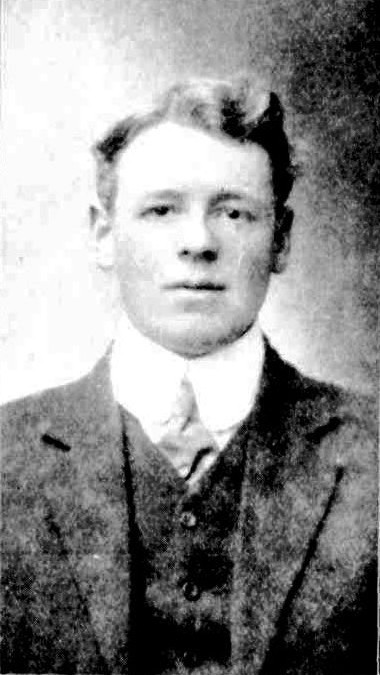 AN AUSTRALIAN AVIATOR.
AN AUSTRALIAN AVIATOR.
Lieutenant. Eric Harrison, the Commonwealth aviator, who arrived from England by the Otway recently, is a native of Castlemaine, Victoria, and his career is an example of the success attending grit and enterprise. After spending six years in the cycle and motor business he entered the engineering works of the Tarrant Motor Co.. Melbourne, where he speedily took a good position. During the visit to Australia of Mr. Hammond. Lieut. Harrison and others assisted that aviator in his flights. This experience gave him an impetus towards aviation, and decided to visit England, and learn all about the art, hoping that when the Defence authorities of the Commonwealth established the aviation corps he would have a chance to be "in it" so to speak.
Arriving in England, Lieut. Harrison went at once into the Aeroplane Construction Works of the British and Colonial Aeroplane works at Bristol, where he was appointed foreman of the engine-fitter, and was engaged in the manufacture of the celebrated "Gnome" engines. He had access to all the plans regard to aviation, and spent his spare time in studying them. Subsequently he entered upon his practical flying course, and after a fort-night's practice (on September 1, 1911) he obtained his pilot's certificate and became a member of the Royal Aero Club.
Since then Lieut. Harrison has followed aviation and was one of the instructors at the flying school on Salisbury Plain. He was sent to the Bristol Company to both Spain and Germany to instruct a number of officers in both countries to fly the Bristol machines, and afterwards went through the War office trials. He has also given demonstration with His machines before the various Continental military authorities, during which he made a record flight of 60 miles in 40 minutes at 4,000ft.
During the past five months Lieut. Harrison has been engaged in superintending the construction of the aeroplanes for the Commonwealth, and brings with him three machines and two expert mechanics. Lieut.Harrison is 27 years of age. AN AUSTRALIAN AVIATOR. (1913, June 13). Western Mail(Perth, WA : 1885 - 1954), p. 24. Retrieved from http://nla.gov.au/nla.news-article44872731
Point Cook in Victoria was the place finally settled on for our first military aviation base:
THE AVIATION CORPS.
FIRST OFFICIAL FLIGHTS.B Y OUR SPECIAL REPORTER. POINT COOK, Thursday.
Today the first official flight by the Royal Flying Corps took place. The conditions which prevailed all the afternoon at the Commonwealth aviation ground could not be considered suitable, even though it was the occasion of the first official demonstration before military authorities of what the aeroplane corps is setting out to accomplish. -A thick haze, mostly of dust, enveloped, the aviation fields, and the wind, which was blowing at more than 30 miles an hour, was gusty and choppy. Two flights were successfully made, one by Lieutenant Petre and the other by Lieutenant Harrison, the former using his monoplane, and the latter a Bristol biplane. The machines rose only a few hundred feet, and each of the flights was short.
Mr. Harrison carried Brigadier-General Gordon as a passenger for a short distance, and then, fearing to turn with low-speed engines in such a wind, he alighted, and dropped the Chief of the General Staff, then returned to the hangar alone. A motor car rescued Brigadier-General Gordon from the midst of a field of thistles.
Point Cook is a minor point on the western shore of Port Phillip, about four miles from Werribee. Except for a few isolated farm houses the locality is a deserted one. Plains stretch for miles on either hand. From the point of view of the aviator- the spot is suitable enough, even if a little isolated- and remote. A huge tent is the temporary hangar which has been erected for stabling the two aeroplanes. The other two and later machines have not yet been brought to the aviation ground, as there is no place to house them. The delay in providing this is due to the Home Affairs department holding back the work of erecting permanent hangars for the five aeroplanes that are now owned by the Defence department.
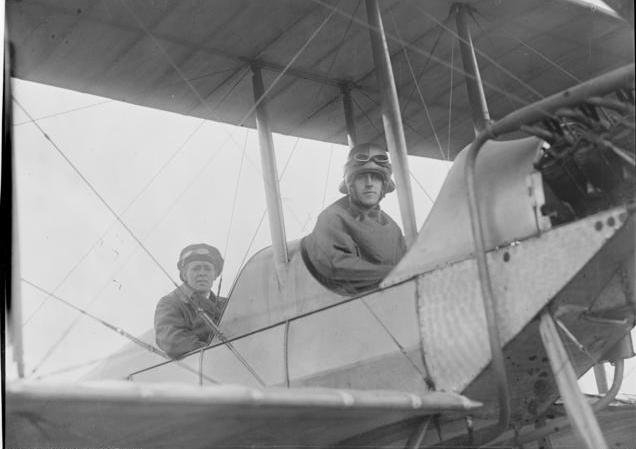
Lieutenants Harrison (left) and Petre (right) in a B.E.2 at Central Flying School, Point Cook, 1914. Courtesy Australian War Memorial, photo Number: A03916
THE OFFICIAL FLIGHTS.
For four or five days the instructors have been testing the machines and getting accustomed to Australian air conditions. They have made a number of flights. Yesterday Lieutenant Harrison, in the Bristol biplane, flew across country towards Sunshine at an altitude of 1000 feet, and Lieutenant Petre flew up the coast to Williamstown in his monoplane. But today has marked the official opening of military flying in the Commonwealth. Both aviators have been anxious that the actual instruction of officers should commence as soon as possible, and are taking every opportunity to make .themselves quite at their ease in their machines. Brigadier-General Gordon, chief of the General Staff, and Major White, director of military operations, arrived from the barracks shortly after 4 o'clock. They had been delayed by the state of the roads, and did not witness the first flight that was made by Lieutenant Petre in his monoplane. This machine is of the Duperdessin type, and the wings are some feet longer than those of the Sopwith biplane that was used by Mr. Hawker. The engine, too, is of a make not familiar to the Australian public, being a three-cylinder Anzani, of 35 horse power, and capable of driving the monoplane at 48 miles an hour, whereas Mr. Hawker's machine has-a speed of 90 miles an hour, and is driven by an 80 horse power engine.
The flight was short, and what aviators describe as "'bumpy," for the strong southerly wind that was blowing at the rate, of over 30 miles an hour did not let the machine make much headway when travelling against it. When turning, the gusts, which came up fiercely, rocked the air craft, and it took all the pilot's skill to keep it steady. After circling round several hundred feet from the ground Lieutenant Petre descended.
Brigadier-General Gordon had now arrived, and was anxious to make the first official flight. He climbed into the seat behind Lieutenant Harrison when the Bristol biplane was wheeled out of the shed.
This type of aeroplane was seen in Australia some years ago, when Mr. Hammond made a series of splendid flights in what is now regarded as an old-fashioned type of machine. The speed of this aeroplane is only 45 miles an hour. It is fitted with a Gnome seven-cylinder engine, of 50 horse-power. These machines in England today on Salisbury plains are used for teaching beginners to fly. They are regarded as fairly safe, though, of course, not "fool proof." There is accommodation for a passenger behind the pilot.
Lieutenant Harrison's biplane was started with the usual twist of the propeller(the aeroplane being driven in this case), and,' rising' as if with difficulty, flew slowly across the ploughed field. It seemed as if in the wind, which was nearly "dead ahead," the weight of two people was too much. When about half a mile distant from the starting point the pilot was seen to be descending, and the machine travelled along the ground amongst high thistles. Brigadier-General Cordon then alighted, and the propeller having been set spinning again by the mechanics, who arrived by motor car, the biplane soared into the air, this time ascending to the height of several hundred feet. Then it flew on steadily, but just as it was crossing a road prior to entering the field where it was to alight, the pilot dived his machine towards earth, but righted it again, and flying within a few feet of the ground, alighted a hundred yards from the hangar. Lieutenant Harrison, speaking of the flight, said the wind was exceedingly choppy. -He had hesitated to tun in the wind with a passenger aboard with so little power available. "It was a rough passage," he went on; "'one of the worst that I have experienced, and when I was crossing the road I was thrown out of my seat; and, I tell you, it took me all my time to scramble back and get control. That was why the machine dipped like it did. When we get the Bristol B.E.- machines out we will have the power, and will be able to do anything in a wind like this."
Further flights had to be postponed, as the wind was increasing in violence. The machines were returned to the hangar, and the military party boarded the motor car and returned to Melbourne. THE AVIATION CORPS. (1914, March 7). Leader (Melbourne, Vic. : 1862 - 1918), p. 39. Retrieved from http://nla.gov.au/nla.news-article89314958
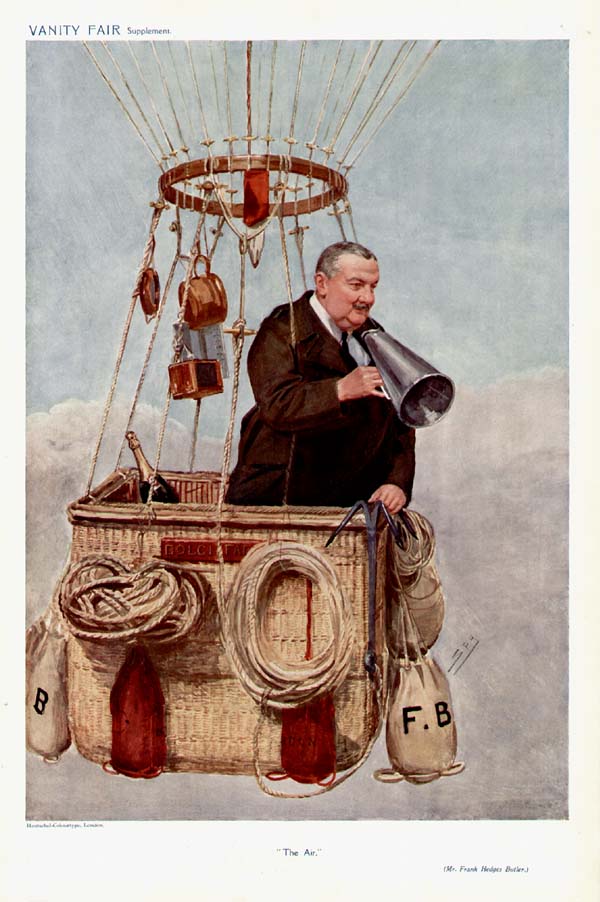 Flying Like a Bird.
Flying Like a Bird.
Mr. Frank Hedges Butler(founder of the Aero Club of the United Kingdom) describing his impressions of his flight last month with Mr. Wilbur Wright, at Le Mans, France, said : — ' I have just flown the same as the birds. It is like gliding on beautiful water where you can seethe bottom — in perfect security. Wright feels his levers and looks at his planes like a skipper looks at his sails. In 120 free balloon ascents that I have made, including twice crossing the Channel in the widest and narrowest parts, and once in a dirigible airship, the ' Ville de Paris,' nothing is !more charming than flying. The first six Englishmen to fly in an aeroplane heavier than air are : — Mr- Henry Farman, who resides in Paris ; Mr. Fordyce, who resides in Paris'; Hon. C. S. Rolls, son of Lord Llangattock ; Mr Frank Hedges Butler, director of the well-known firm of wine merchants, Regent-street, London, W. ; Major Baden-Powell, brother of General Baden-Powell ; Mr. Griffith Brewer, a member of the Aero Club.'Flying Like a Bird. (1908, November 26). The Macleay Chronicle (Kempsey, NSW : 1899 - 1952), p. 8. Retrieved from http://nla.gov.au/nla.news-article174463809
Right: Caricature of Butler by Leslie Ward from Vanity Fair, December 11, 1907 - Caption reads: "The Air"
WRIGHT AEROPLANE. London, Sept. 22.Mr. Wilbur Wright, at Le Mans, France, yesterday, in his aeroplane, flew 66 kilometres (31 miles 672. yards) in one hour 31 minutes 25 seconds, being a record both as to distance and time. Mr. Wright's motor worked without a hitch. The aeroplane rose over too feet, and when it descended the crowds frantically cheered the aeronaut. Mr. H. White, the American Ambassador, in congratulating Mr. Wright, remarked, "The American nation may well be proud of you." WRIGHT AEROPLANE. (1908, September 24). Goulburn Evening Penny Post (NSW : 1881 - 1940), p. 1. Retrieved fromhttp://nla.gov.au/nla.news-article98782649
PROPHET OF THE AIR. Mr. Frank Hedges Butler, the aeronaut, recalls that nine years ago--on October-13, 1908-describing in a London newspaper his impression of an aeroplane flight with Mr. Wilbur Wright at Le Mans, he made a forecast which, optimistic though it may have seemed then, falls short of the achievements of to-day:" Lighthouses on land," he said in October, 1908, " will be erected by the Trinity Board to mark the way at night. Lamps on aeroplanes or fliers will be used. The speed of the smaller planes will be terrific-200miles an hour. Twenty-one miles across the Channel means a very few minutes. Aeroplanes can be made to float on the water and raise themselves. No reason why, if now they can carry equal to three passengers, an aeroplane should not carry more with larger planes and engines." PROPHET OF THE AIR. (1918, January 25). Seymour Express and Goulburn Valley, Avenel, Graytown, Nagambie, Tallarook and Yea Advertiser (Vic. : 1882 - 1891; 1914 - 1918), p. 5. Retrieved from http://nla.gov.au/nla.news-article92149291
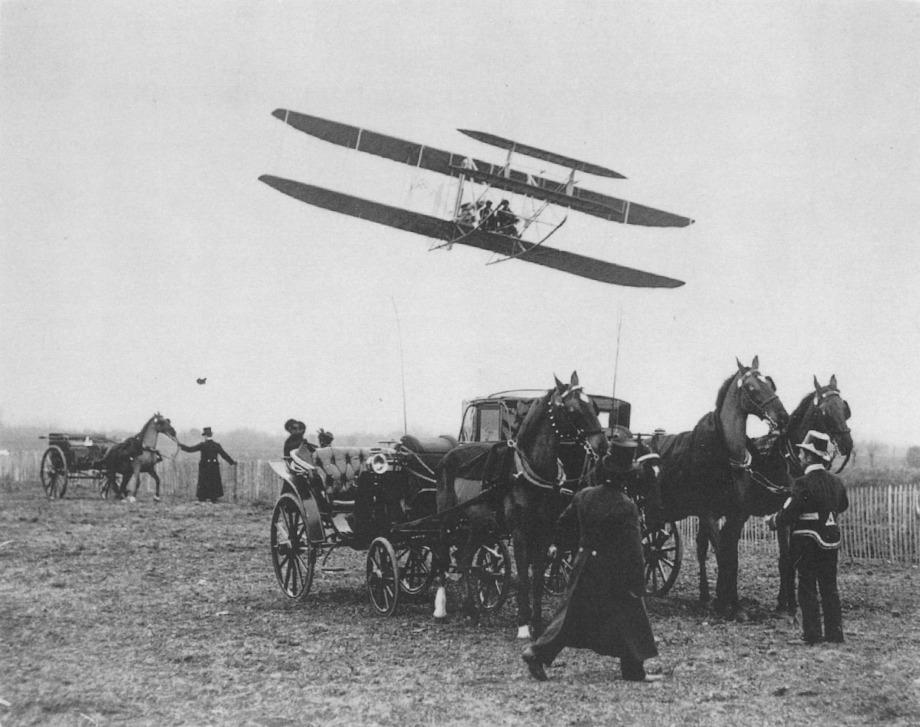
1908 -- People came from all over Europe to watch Wilbur fly. He demonstrates the Flyer for thousands of people that include heads of state, royalty, and the commanders of armies - photo courtesy Wright Brothers Aeroplane Company website
AUSTRALIAN AERO CLUB. INAUGURAL MEETING.
An important step has been made in the advancement of aviation in Australia. In November of last year an Aero Club was formed at Point Cook by the instructors of the Central Flying School, Captain Petre and Lieutenant Harrison and the first officer aviators who had obtained their pilot certificates at the school - Captain T. W. White, Lieutenants R. Williams, D. T. Manwell and G. P. Merz. It was then decided to form an Australian Aero Club to advance the cause of aviation, and to be a controlling body and social club. It was resolved that efforts should be made to conduct the club on lines similar to those of the Royal Aero Club of Great Britain. This club, with the Federation Aeronautiqe Internationale of France and its affiliated bodies controls aviation and grants pilots' certificates throughout the World.
As a result of the decision arrived at the inaugural meeting of the Australian Aero Club was held on Friday night last at the Cafe Francais, when military and civilian aviators and others directly interested met to elect office bearers, and lay down the work to be carried out. Captain H. Petre, who will he leaving shortly in command of the Central Flying Corps, which will proceed to the front with the Indian Army, presided.
On Friday night Lieutenant W. Sheldon of the Royal Australian Field Artillery was elected secretary in place of Captain White, who is leaving, shortly for the front with the Flying Corps. A committee was elected to draw up rules to be placed before the next meeting, which will be held shortly, qualifications for membership fixed, and some new members elected. The members of the committee are as follows - Major E. Harrison, Lieut. E. Harrison, Captain T. W. White Lieuts. Rolfe (R.A.G.A.) G. P Merz and Mr. Reynolds.
It is recognised by the founders or the club that the membership will not be large, but it is expected that the popularity of aviation, as its possibilities become more wide!y known, will tend to awaken greater interest in the science in Australia. At the conclusion of the meeting, Lieut. Eric Harrison proposed the health of Captains Petre and White and wished them a safe return. The toast was duly honoured, and appropriately responded to. AUSTRALIAN AERO CLUB. (1915, April 13). The Argus(Melbourne, Vic. : 1848 - 1957), p. 11. Retrieved from http://nla.gov.au/nla.news-article1509465
AVIATION. Some years ago a number of enthusiasts inaugurated an aviation club, with the object of encouraging the science of aeronautics in Australia. Interest flagged, and want of support and public enthusiasm the association died down. It was on 6th November, 1914, when aviation began to hold the interest even of the ordinary man in the street, that the Australian Aero was established by the instructors of the Central Flying School, Captain Petre and his colleague, Lieutenant E. Harrison. At a meeting held at Point Cook, it was decided to form this club, including among its members, the first officer aviators to obtain their pilot certificates at the flying school. These officers included Captain T.W. White, Lieutenant A. G. P. Merz, Lieutenant R. Williams and Lieutenant D. T. Maxwell. At this little meeting it was agreed that the objects of the Australian Aero Club would be to advance the cause of aviation, and to be a controlling body and social club - run on similar lines as far is possible, as the Royal Aero Club of the United Kingdom.
The inaugural meeting of the Australian Aero Club was held at the Cafe Francais on Friday evening, -9th April, when a strong attendance of military and civilian aviators, defence representatives and others, met to elect office bearers, and lay out plans of work to be proceeded with by the club. Lieutenant D. Sheldon., of the R.A.F.A., was elected secretary in place of Captain White, who is leaving shortly for the front with the flying corps. Captain H. Petre, who is also leaving very soon in command of the flying corps which will proceed to the front with the Indian army, presided. A committee, including the following, was elected: Major E. Harrison, Mr. Tom Reynolds, Lieutenant E. Harrison, Captain T. D. White, Lieutenant Ralfe and Lieutenant Merz. The committee agreed to draw up rules to be placed before the next meeting, which will be held at an early date. Qualifications for membership were fixed and some new members were elected. At the conclusion of the meeting, Lieutenant Eric Harrison proposed the healths of Captains Petre and White, wishing them both a safe return.AVIATION. (1915, April 17). Leader (Melbourne, Vic. : 1862 - 1918), p. 22 Edition: WEEKLY. Retrieved from http://nla.gov.au/nla.news-article91374796
On August 4th, 1914 Britain declared war on Germany and many young Australians who had gone to England to also become 'airmen' were quickly in amongst the action in France. Aero Clubs, and the great ideas they would aim to take forward were placed on hold.
Mr. Glynn (Minister of External Affairs) received a telegram from the Prime Minister (Mr. Joseph Cook)at about 1 o'clock on Wednesday afternoon stating that official information has been received that war has broken out with Germany. Mr. Cook also stated:— "Australia is now at war."
The Governor-General has received a cable stating that war has broken out between Great Britain and Germany, and also messages expressing appreciation of Australia's offer of an expeditionary force.
The German cargo steamer Pfalz left her berth at Melbourne on Wednesday morning to proceed to sea, but inconsequence of official intervention she had to return to her berth.
LONDON, August 5.
Great Britain is now definitely at war with Germany. In the House of Commons yesterday, Mr. Asquith explained that Great Britain had asked Germany for an explanation of her intentions regarding the neutrality of Belgium, and had given the Berlin Government up to midnight to reply. Apparently the rejoinder was unsatisfactory, for later advices stated that a state of war existed between the two countries, and this was followed by an official declaration of war by Germany. It is stated that the German High Sea Fleet has left Kiel, and is steaming westward. If this be so, an engagement with the British Fleet now patrolling the North Sea, may be momentarily expected. Reports from Stockholm give details of a naval engagement between the Russians and Germans in the Baltic Sea. The Germans engaged the Russian Fleet near the Aland Islands, and the Russians, probably overwhelmed by numbers, were driven back, and have taken refuge in the Gulf of Finland. On land the Czar's forces are reported to have been more successful. Germany has been entered at several points on the eastern frontier, but no big engagements have yet been reported. Severe fighting has occurred between the Austrians and Servians near Belgrade, but Austria is believed to have abandoned her aggressive campaign against the little Kingdom in order to prepare in Galicia for the oncoming of the Russian Armies. There does not appear to have been any really serious fighting so far between the French and Germans, but it is now definitely announced that a German Army has crossed the north-east frontier. WAR BETWEEN ENGLAND AND GERMANY. (1914, August 6 - Thursday).The Advertiser (Adelaide, SA : 1889 - 1931), p. 8. Retrieved from http://nla.gov.au/nla.news-article6428546
A small insight into just one of these early Australian pilots experience in France, a man in his early 20's when this conflict began and who had gained his pilot's licence in 1912:
Australian Aviator. LIEUTENANT CONRAN'S WORK.
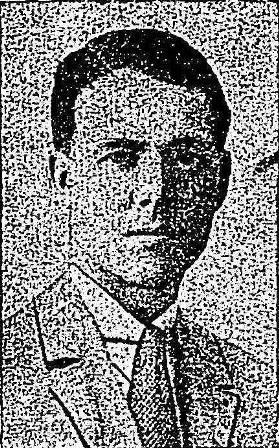 A couple of weeks ago …. it was intimated that Lieutenant Eric Conran, who is at the front with the Royal Flying Corps, had been mentioned in despatches; which, of course, is a very high distinction. Many of the Australian papers printed the officer's name as "Conway," but he is the son of Mr. H. L. Conran, so well known from Queensland to Adelaide, where he resided for many years. Lieutenant Conran visited his native land on furlough a few months prior to the war, and gave an interesting interview on military aviation and flying generally.
A couple of weeks ago …. it was intimated that Lieutenant Eric Conran, who is at the front with the Royal Flying Corps, had been mentioned in despatches; which, of course, is a very high distinction. Many of the Australian papers printed the officer's name as "Conway," but he is the son of Mr. H. L. Conran, so well known from Queensland to Adelaide, where he resided for many years. Lieutenant Conran visited his native land on furlough a few months prior to the war, and gave an interesting interview on military aviation and flying generally.
Shortly after his return to London, hostilities broke out, and he was sent with his corps to the Allies' lines in France. Now we have received copies of a couple of letters from Lieutenant Conran, which have this peculiar interest, that they are intimate notes struck off hurriedly without the slightest idea of ever seeing print, They give an excellent idea of what our men at the front are doing and thinking about, and this gives them, a value that does not attach to more dramatic-* accounts of various phases of the operations.
Annexed are the letters
"September 28, 1914:
"Very many' thanks for the parcel of socks' and cigarettes and woollen caps— they are topping.- - The weather has been very wet the last week, ruining everyday, but we are all merry and bright, and living very well. We-cook our own dinner; which is nearly always the same—roast chicken; . potatoes, onions, and anything we can pick up. The rain is sometimes rather, unkind, when it puts the fire out just at the time we want to cook. Rice is our strong point. There is a big battle going on to-day, and we can hear the guns having a great time.
"Have seen a great many German prisoners passing through, looking rat .cr' pleased to get away, from war, ic., or anything to do with it. Have seen quite a few lot of country houses. Some are lovely, with beautiful gardens, but they are all empty and everybody has gone away; There is nothing I should like so much as for you to send a woollen waist coat and some cigarettes. Your. Papers arrived all right. Give my love to the family. Am very well indeed. Hope to hear from you soon."
October 1, 1914. . One of our officers is going home, so this is another chance for you to get a letter-quicker than' if I were to post it here. I get your letters all. right, and thank you so much for writing so often. It" is the greatest joy getting your letters, especially after one has been out all day under fire of the Germans All the parcels have arrived, and the parcel of foodstuff 'was excellent," and will be most useful.' Thank you so much for thinking of it. There is one thing we should love you to: send—that is a tin of curry powder. Now for a little news of myself, as you have asked so often..' It is really only in these letters I can say much, and then not so much ns I should like. Your letters are not opened, so you can say what, you like.
"Everything is going on all right, and it is only a matter of time before the Germans are smashed to bits. This battle has been a very long one, and the biggest tattle in the history of the world. Both sides have very strong positions, and it is really an artillery duel. Our men are doing awfully well. - The R.F.C. has made a name for itself, and especially No. ___squadron. The general has sent our colonel a wonderful chit about us. The work is interesting, by seeing; everything that is going on, but it is not so nice, as now the whole time you are over the enemy, they are shelling you hard. The day before yesterday, my machine was under fire for an hour and a-half,. and at one time we counted 35 shells that burst quite close to us,- and when -we came down we found a large piece, of shell had gone through one of the wings, - and' that four bullets-had gone through the other wing. This happens every day, so am getting used to it by now.
"Yesterday I was told to go up behind the enemy's lines, and drop bombs on a railway station. The clouds were very low, so sneaked up to the place where I wanted, to get without getting shot at, but when I came up to the station, to drop 'the bombs, the beasts gave, me a terrible shock with their anti aircraft guns (which we call Archibald).
They frightened ten years out of my life, as I could heat the bursts but could not see the shells.' As I returned I dived into a cloud; and then they fairly shelled the poor cloud, but anyhow I managed to sum up enough courage to come out of the cloud and drop the bombs, with what success I am not too sure, but the bombs
I use for that work are a 25-lb. shell.
"Something must have happened. Then I went off, dropping more bombs on troops and bivouac,' altogether dropping, so must have bagged something. – We know for certain that one of my – bombs killed a lot of men and horses at one place. 'It is a very cruel and terrible thing, but it must be done. ;-The general told me last night, that I was the only one who had gone over the enemy yesterday, and-that I was a very fine performer, so that cheered me up a bit. Today is my day off, so am lying in the sun, enjoying life. I have three days on duty and one off.
"The work is very hard on one really, although one does, not feel it at the time, so one earns a day off. 'As I am writing this, I can see one of our machine's getting a lovely time from “Archibald." Russia is the chief source of the petrol supply. Australian Aviator. (1914, December 11). The Week (Brisbane, Qld. : 1876 - 1934), p. 20. Retrieved from http://nla.gov.au/nla.news-article190530147
Conran was a member of Squadron 3 of the newly formed RAF. Although he was one of the lucky ones to survive WWI he died a few years afterwards from an operation performed:
BIOGRAPHICAL PARTICULARS. MAJOR E. CONRAN.
On May 23rd, 1919 a New South Wales division of the Aero Club was formed:
A N.S.W. AERO CLUB. The Future of Aviation.
A New South Wales Aero Club has been formed in Sydney by returned members of the Australian Flying Corps and Royal Air Force, and others interested in the future of aviation, commercial and otherwise. The idea is to link up with the Australian Aero Club which was founded in Melbourne in 1915, and which has issued a number of pilot certificates, on the authority of the Royal Aero Club of the United Kingdom, with which it is affiliated.
The following were elected provisional officers of the NSW club:—Chairman, Mr. H. C. Macfie; chairman of the recently formed Aerial Company; hon secretary and treasurer; Mr. Edward J. Hart, managing director of 'Sea, Land, and Air' committee, Lieut. W. Stutt. A.I.F., chief instructor, aviation school Richmond, Lieut,S. H. Harper, A.F.C., Capt. H. G. Watson, D.F.C. Lieut. S. H. Deamer. A.F.C., Lt. Col. P. W. Wood. D.S.O. and bar. M.C.. and Messrs. W. E. Hart and F. Bignold. A N.S.W. AERO CLUB. (1919, May 27). The Farmer and Settler(Sydney, NSW : 1906 - 1957), p. 4. Retrieved from http://nla.gov.au/nla.news-article123326737
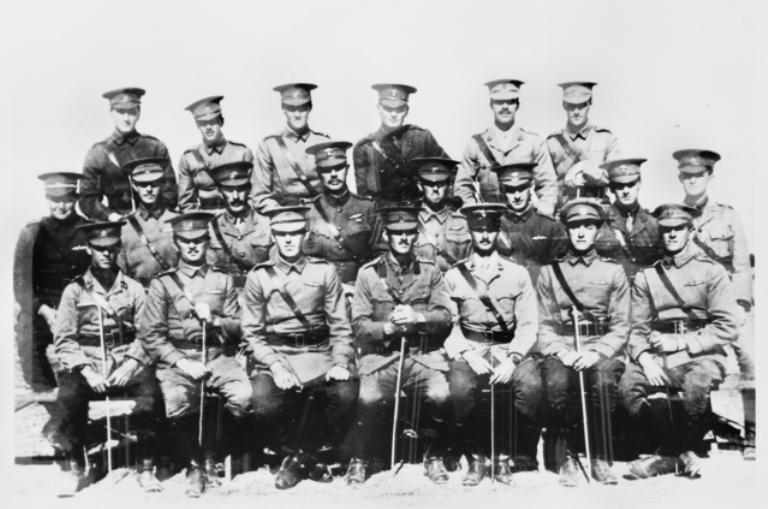
1916. GROUP PORTRAIT OF OFFICERS OF NO. 1 SQUADRON AUSTRALIAN FLYING CORPS (AFC). IDENTIFIED PERSONNEL ARE; (BACK ROW) LIEUTENANTS A. L. MACNAUGHTON; C. J. BROOKES; A. D. BADGERY; C. A. KELLY; S. WOODROW; A. E. GEERE. (CENTRE ROW): LIEUTENANT R. ROSS; CAPTAIN W. SHELDON; MAJOR A. A. BROWN; LT. COLONEL E. H. REYNOLDS; CAPTAIN R. WILLIAMS; LIEUTENANT E. G. ROBERTS; R. S. BROWN; S. J. L. TRELOAR. (FRONT ROW) LIEUTENANTS P. H. MEWLAND; W. E. HART; L. J. WACKETT; CAPTAIN D. V. J. BLAKE; CAPTAIN W. H. ANDERSON; LIEUTENANTS F. H. MCNAMARA and A. MURRAY JONES. Image No.: A04544 courtesy Australian War Memorial
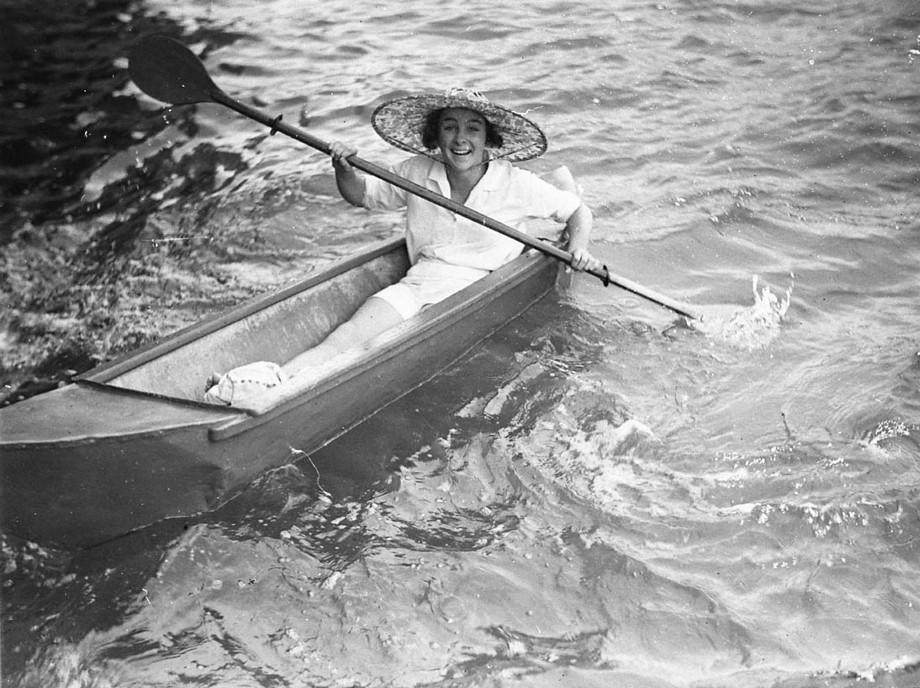
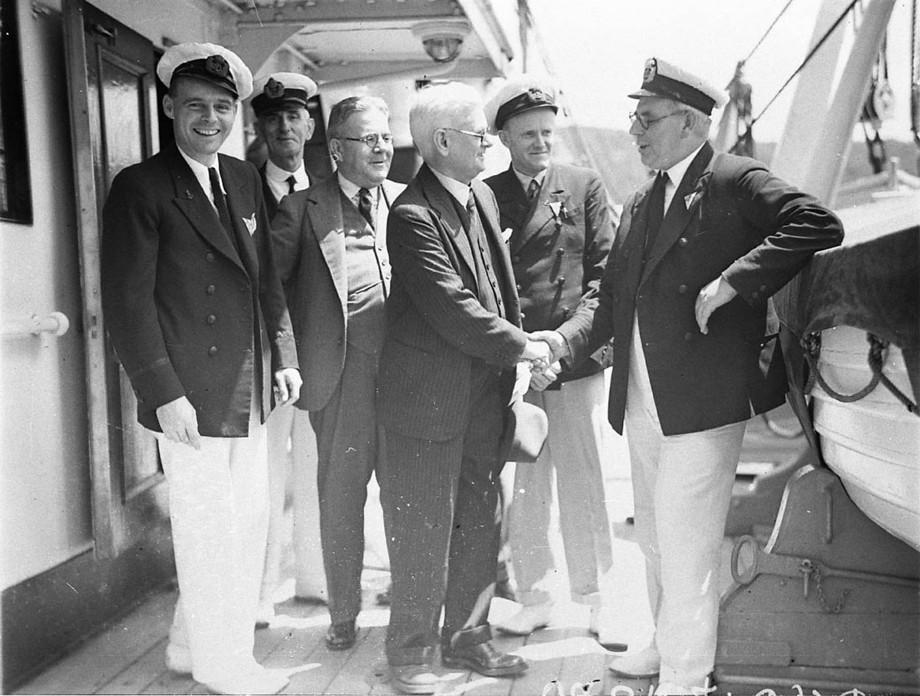
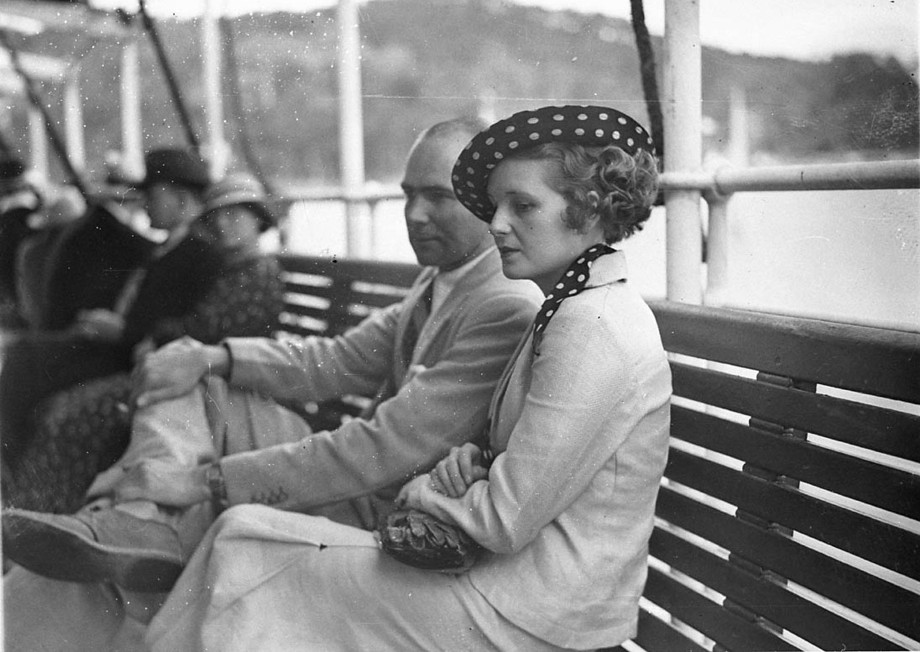
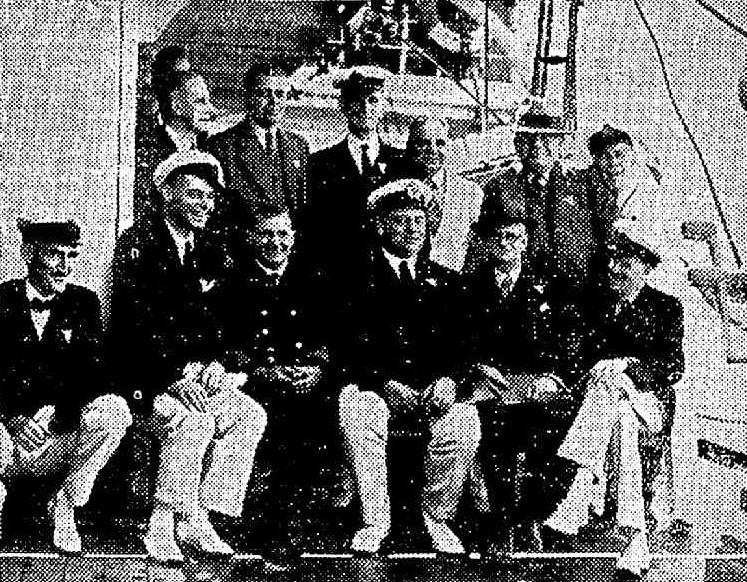
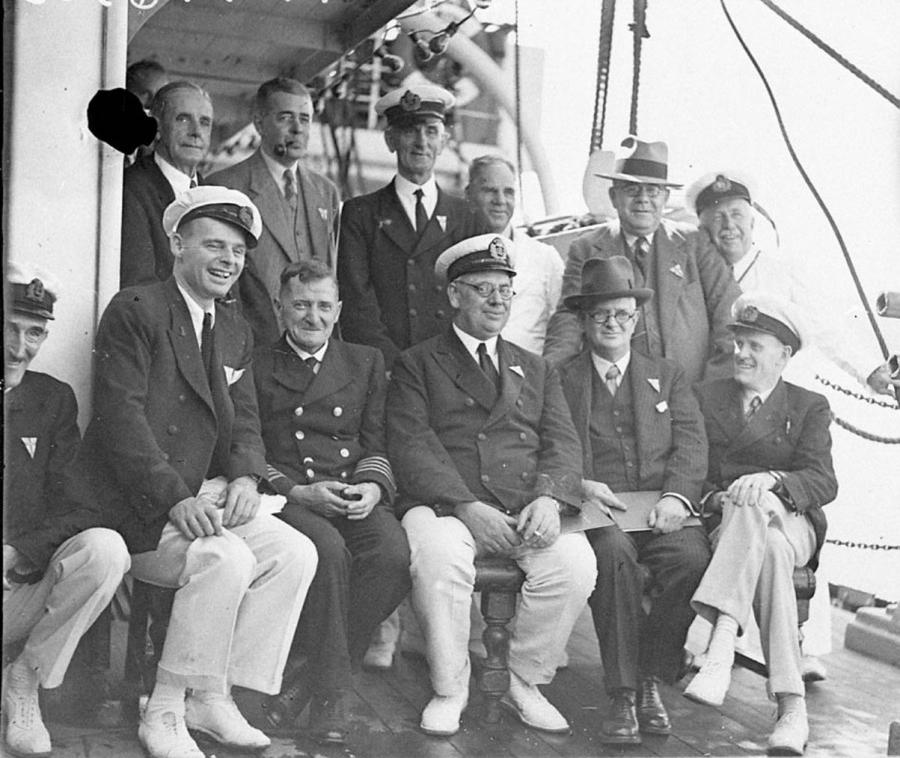
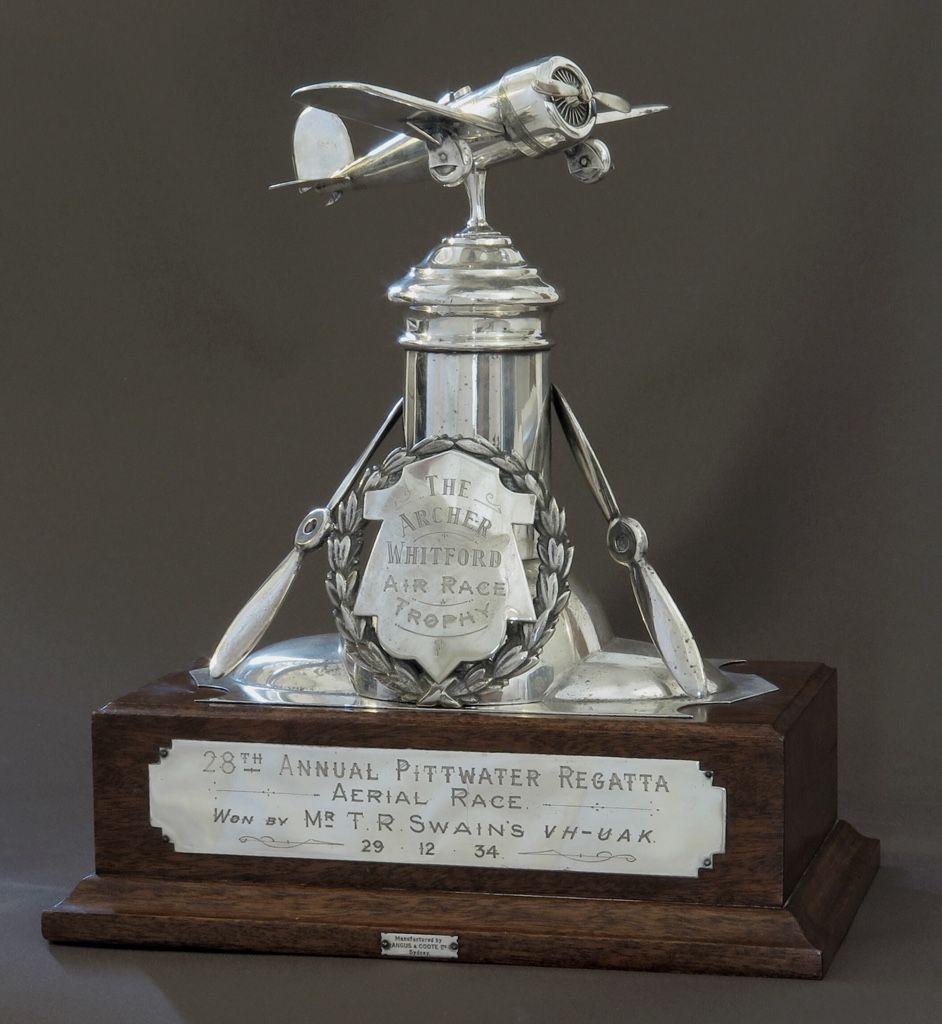
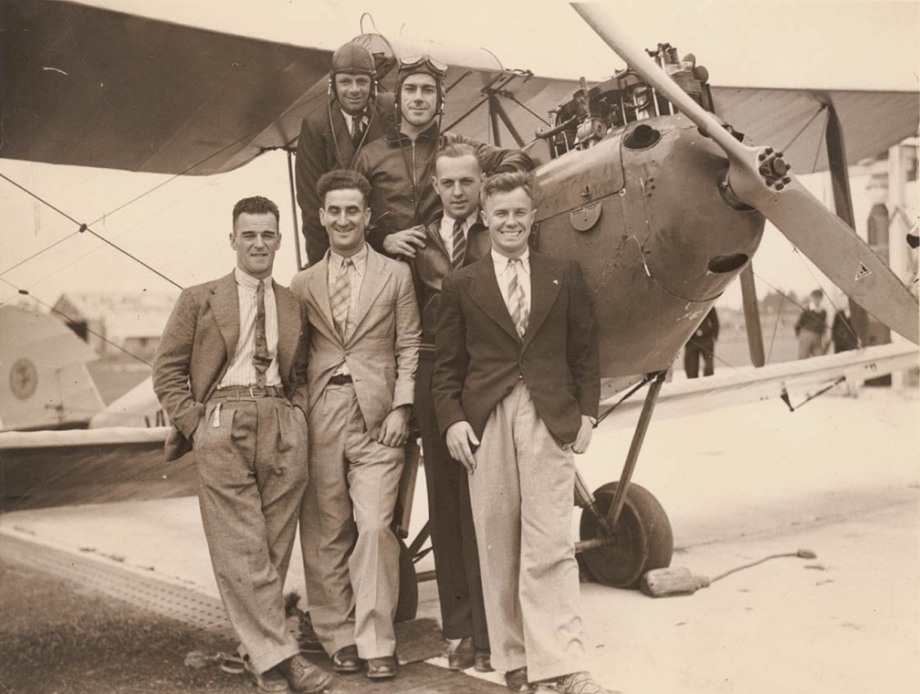
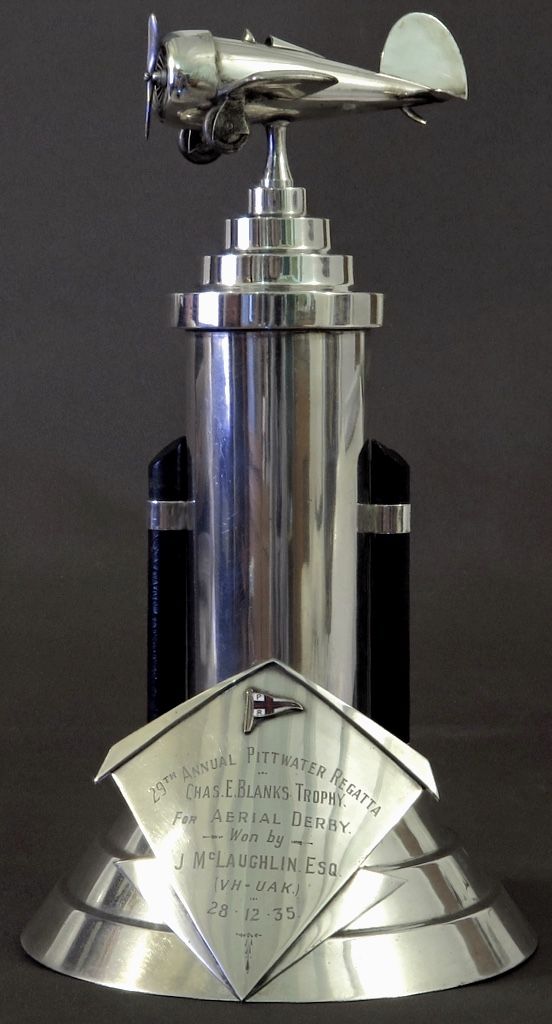
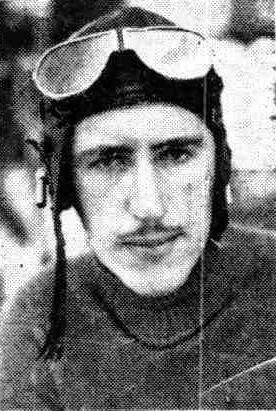
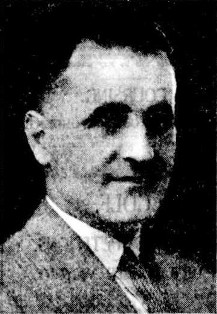 AERO CLUB PRESIDENT.
AERO CLUB PRESIDENT.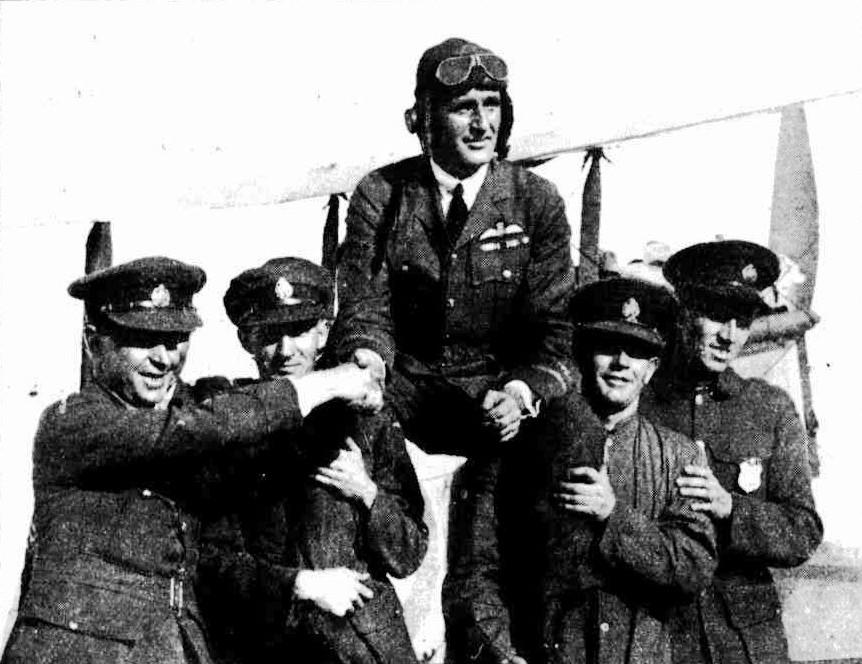
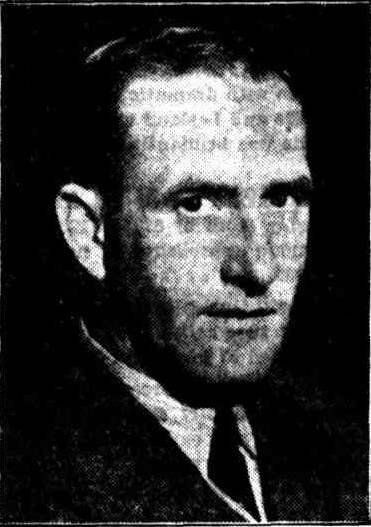 AERO CLUB PRESIDENT. MR. S. J. MOIR. the new president of the Aero Club of New South Wales. AERO CLUB PRESIDENT. (1932, December 6). The Sydney Morning Herald (NSW : 1842 - 1954), p. 12. Retrieved fromhttp://nla.gov.au/nla.news-article16935711
AERO CLUB PRESIDENT. MR. S. J. MOIR. the new president of the Aero Club of New South Wales. AERO CLUB PRESIDENT. (1932, December 6). The Sydney Morning Herald (NSW : 1842 - 1954), p. 12. Retrieved fromhttp://nla.gov.au/nla.news-article16935711 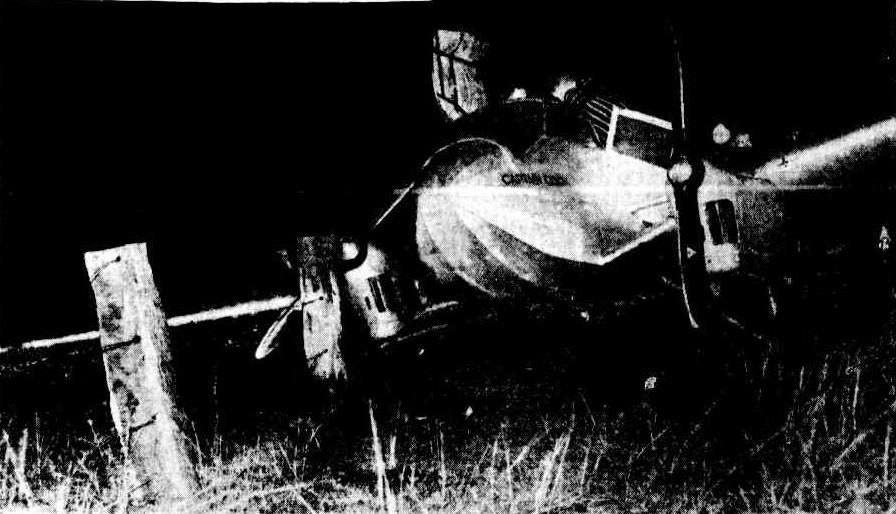
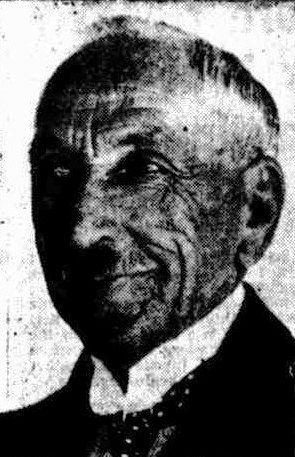 People at Beaudesert did their Best by assembling car headlights at the landing ground to help the plane to land, but. the whole affair indicates that aviation authorities should take some steps to draft out special measures which ought to be followed by small townships in such an emergency as this; -There are at present no' radio facilities in Australia for 'enabling planes to make "blind- landings," though these are being developed overseas. The method of diverting planes to other landing places in the event of fog or rain implies that the civic authorities in every town should be posted in the best method of helping planes to land, to avoid misunderstandings such as occurred last night. Cars sped for Mrs. Woods' paddock, the area usually used at Beaudesert for a landing- ground, and their lights were arranged alongside the paddock, and flares were lit. It was the manner in which these ears were arranged that confused Pilot McLaughlin and caused him to make his landing across the field at its narrowest point. For in an emergency such as this it is usual that the plane lands, over the cars supplying fight to the landing ground. He flew fairly high over the edge of the field to avoid any possibility of there being electric light or telephone wire’s bordering it, which there were, In fact, and made a perfect landing. Unfortunately, he could not get the run off the machine before he noticed ahead' of him a bank of trees on the edge of a creek which skirts the paddock. At first taking them to be rock fr-rflince he thought he was at some coastal township, he swerved the plane in order to avoid a collision. Unfortunately it was Impossible for him to have seen a fence which ran across the field near these trees. If he had had ten or fifteen feet more to spare the plane would have landed without damage. But as he swerved the starboard wing hit a wire fence post which ripped the under side of the wing practically off the fuselage. An extra touch of hard luck was the fact that the very next post the plane encountered in the fence was a big round post, which had been securely stayed. The starboard engine came up solidly against this round post and was pushed out of alignment, the propeller coming to rest against the windscreen without so much as marking it.
People at Beaudesert did their Best by assembling car headlights at the landing ground to help the plane to land, but. the whole affair indicates that aviation authorities should take some steps to draft out special measures which ought to be followed by small townships in such an emergency as this; -There are at present no' radio facilities in Australia for 'enabling planes to make "blind- landings," though these are being developed overseas. The method of diverting planes to other landing places in the event of fog or rain implies that the civic authorities in every town should be posted in the best method of helping planes to land, to avoid misunderstandings such as occurred last night. Cars sped for Mrs. Woods' paddock, the area usually used at Beaudesert for a landing- ground, and their lights were arranged alongside the paddock, and flares were lit. It was the manner in which these ears were arranged that confused Pilot McLaughlin and caused him to make his landing across the field at its narrowest point. For in an emergency such as this it is usual that the plane lands, over the cars supplying fight to the landing ground. He flew fairly high over the edge of the field to avoid any possibility of there being electric light or telephone wire’s bordering it, which there were, In fact, and made a perfect landing. Unfortunately, he could not get the run off the machine before he noticed ahead' of him a bank of trees on the edge of a creek which skirts the paddock. At first taking them to be rock fr-rflince he thought he was at some coastal township, he swerved the plane in order to avoid a collision. Unfortunately it was Impossible for him to have seen a fence which ran across the field near these trees. If he had had ten or fifteen feet more to spare the plane would have landed without damage. But as he swerved the starboard wing hit a wire fence post which ripped the under side of the wing practically off the fuselage. An extra touch of hard luck was the fact that the very next post the plane encountered in the fence was a big round post, which had been securely stayed. The starboard engine came up solidly against this round post and was pushed out of alignment, the propeller coming to rest against the windscreen without so much as marking it. 
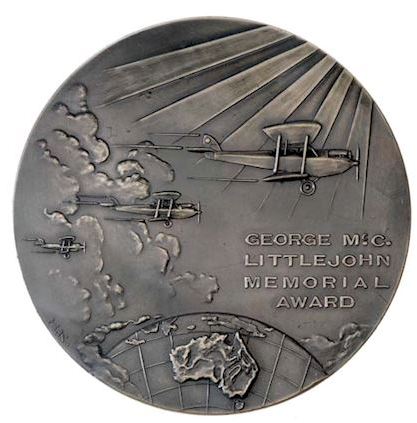 PACIFIC FLIGHT TRAGEDY.
PACIFIC FLIGHT TRAGEDY.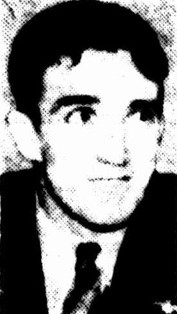 Air Pilot's Million Miles
Air Pilot's Million Miles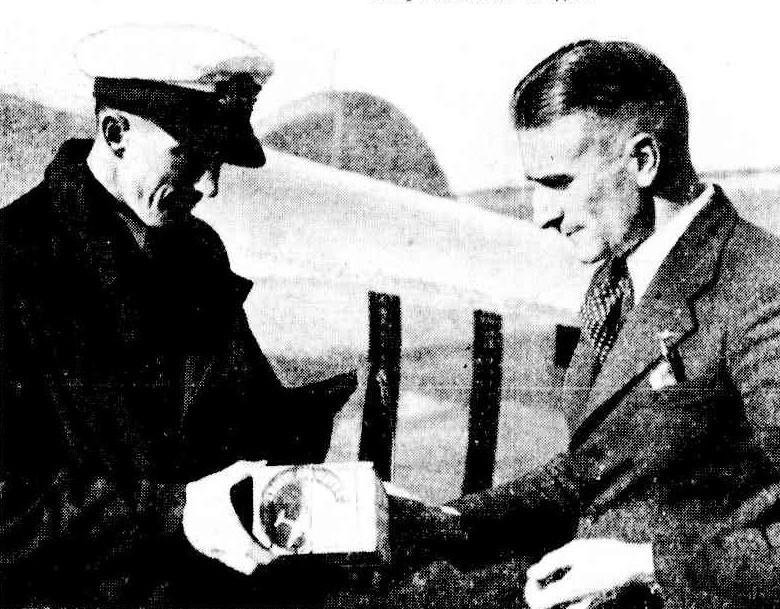
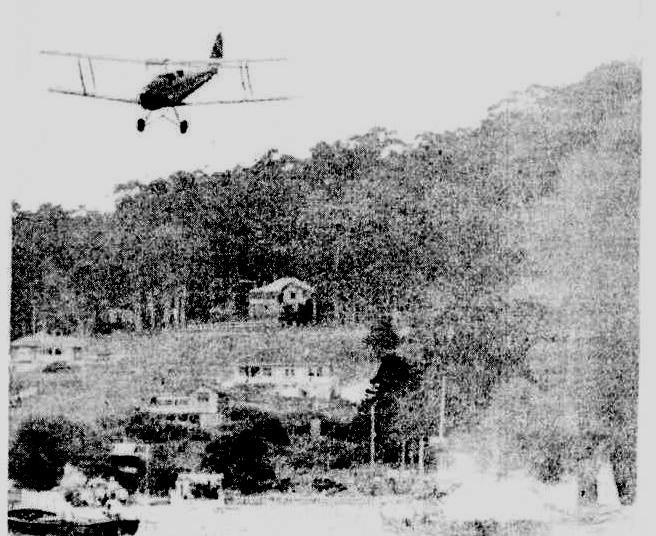


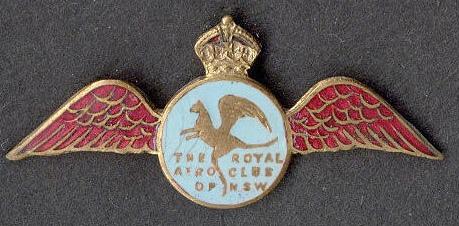 Although some may state early flying, like motor cars, motor yachts and the larger yachts, were a rich man’s sons and daughters pleasure extended into air, these people did establish industries that brought Australia forward, connected us to the rest of the world more readily, and were of service in defence when needed.
Although some may state early flying, like motor cars, motor yachts and the larger yachts, were a rich man’s sons and daughters pleasure extended into air, these people did establish industries that brought Australia forward, connected us to the rest of the world more readily, and were of service in defence when needed. References and Notes:
Archer Whitfield
OLYMPIA SKATING RINK. The Olympia Skating Rink is to be reopened to -day, under the management of Mr. Archer Whitford. The first session will be held at 10 a.m., followed by others at 3 p.m. and 7.30 p.m. The rink has been renovated and the refreshment room will be under the direct control of the management. OLYMPIA SKATING RINK. (1910, April 9). Newcastle Morning Herald and Miners' Advocate(NSW : 1876 - 1954) , p. 6. Retrieved from http://nla.gov.au/nla.news-article137459810
'WHIT' ON THE WANDER.
Archer Whitford, probably the best known man connected with the Australian moving picture business, goes on a world jaunt when the Orvieto sails next Saturday. Born in Moonta, South Australia, 36 years ago, he has crammed an enviable amount of experience Into his comparatively brief career. The West Australian goldfields knew him in the early days, but he made his grand entry into the show world in Sydney by selling cushions on which Theatre Royal gallery patrons might ease their aches. Roving from one end of Australia to the other he eventually settled down to hard work In Sydney, founded a fine business, established a dairy farm, planted bananas In Queensland, started a newspaper, and pioneered night tennis. He owns the largest privately owned tennis courts In Australia, and turned them Into a big proposition despite the pessimists. Mrs. Whitford and a private secretary toddle along with him on what will be his second trip abroad — the first being under the comfortable auspices of the South Australian Government. The Sydney showmen will wine and dine him in elaborate fashion at the Capitol before he sails. "WHIT" ON THE WANDER. (1924, January 13). Truth (Sydney, NSW : 1894 - 1954), p. 4. Retrieved from http://nla.gov.au/nla.news-article168709427
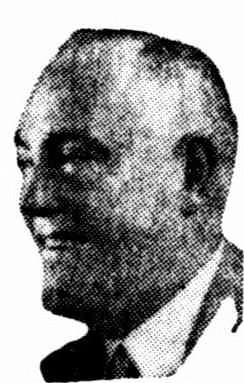 Sight-seeing On Bridge
Sight-seeing On BridgeGREETINGS EXCHANGED.
Mr. Archer Whitford, postmaster of the Harbour Bridge Post-office, has received a letter from the Governor-General of New Zealand (Lord Bledisloe), expressing appreciation of the greetings conveyed from the post-office by the last air mail carried by Mr. C. T. P. Ulm in the Faith In Australia.
Replies to letters sent by the same air mail were received also from the Prime Minister of New Zealand (Mr. Forbes) and the Minister for Education, as well as from editors of the leading newspapers In the Dominion. GREETINGS EXCHANGED. (1934, April 23). The Sydney Morning Herald (NSW : 1842 - 1954), p. 11. Retrieved from http://nla.gov.au/nla.news-article17051748
MOTION PICTURE INDUSTRY AUSTRALIAN STUDIOS.
Sydney. June 23.Mr. Archer Whitford, proprietor of "Everyone’s," the motion picture trade magazine, has written to the Federal Government, offering to find £100,000 if the Government will advance a similar sum for the establishment of motion picture studios in Sydney and Melbourne. Discussing the proposal to-day, Mr. Whitford said that he was prepared to lodge £5000 with the Government as proof of his bonafides to find another £20,000 within a month of the offer being accepted, and the remaining £75,000 within three months. The control of the undertaking could be vested in a board of six, of whom he –would appoint three and the Government three. An independent chairman would be elected by the board. Mr. Whitford said that Australian pictures had suffered mostly from technical shortcomings. He proposed, therefore, that each studio should be staffed with experts brought from America, England or Germany,. including art directors, scenario writers, and such specialised workers as "gagmen" and make-up artists. MOTION PICTURE NDUSTRY. (1927, June 28). Western Argus(Kalgoorlie, WA : 1916 - 1938), p. 5. Retrieved from http://nla.gov.au/nla.news-article34415114
£100 For Pilot Baker
SYDNEY, Friday.-Archer Whitford, managing director of the film magazine, "Everyone's" has presented Pilot Harry Baker, rescuer of Paddy Whelan, with £100. He said that he knew the country and that Baker was more than a sport to take the job on. £100 For Pilot Baker. (1933, January 6). Barrier Miner (Broken Hill, NSW : 1888 - 1954), p. 1. Retrieved from http://nla.gov.au/nla.news-article48416632
THE AIR AS A CAREER. LEARNING TO FLY
By -Mr. S.Bridgland, Manager, The Royal Aero Club of N.S.W.
The facilities for learning to fly in this country are widespread. There is an Aero Club in every capital city of the Commonwealth and the very large number of individuals who possess the 'A' Licence, the most easily got of the Civil Air Board Licences, testifies to this fact.
The possession of an 'A' licence has proved to a Civil Air Board examiner that he or she can take-off, climb to a predetermined height, make turns to the right and left, switch off the engine and glide down to land on or near a given spot. It is generally found that a pupil can achieve this degree of proficiency in about 10 or 12 flying hours. Having successfully obtained an 'A' Licence which entitles the pilot to fly solo only, his next step is to pass the Civil Air Board's Advance Course and complete 25 hours solo. This entitles a pilot to carry passengers but not for hire or reward. Before a pilot can carry passengers for hire or reward the Air Board's 'B' Licence must be acquired. For this the candidate must show proof that he has done at least 100 hours solo flying and must pass examinations in cross country flying, night flying, blindflying, forced landings, etc. In addition the candidate must pass technical examinations in engines and aircraft, also medical examination. Having passed all these tests and examinations, a pilot is issued with a 'B' or Commercial licence and is eligible to carry passengers for hire or reward. Regular air-line flying calls for more than just the ability to fly. Navigation plays a very important part in commercial flying, and, although a 'B' licence holder is expected to know the rudiments of aerial navigation, the possession of a navigator's licence is essential before a pilot can get employment with a company such as Empire Airways Ltd. If a machine carries wireless, then the pilot must hold a wireless licence. Aviation is growing so fast that there is now a very promising future for the young man who, at the age when a decision on his career must be taken, plans to go into it. Commercial aviation is only now impressing itself on the public as a means of transport. The widespread activities of the big aviation companies in linking
The pilot's cockpit in the Imperial Airways liner 'Delphinus,' of the 'Diana' class. It is the ambition of many young men to become pilots.
the capital cities of Australia, make it obvious that there is ample room for a big influx of well trained young men into a young and growing profession.
To date, the Royal Aero Club of New South Wales has trained —375 pilots to 'A' Licence.125 pilots to 'B' Licence.25 pilots to instructor's Licence. A large number of these pilots have acquitted themselves in the world of aviation. The Club in this respect can point proudly to a record that is unsurpassed by any similar training organisation. H. F. Broadbent, the holder of the England-Australia record and the round Australia record is Club trained.
O. F. Y. Thomas, M. Mather are 1st Officers with Empire Airways. G. E. Hemsworth, J. McLaughlin, with Airlines of Australia. R. P. Smith, with Australian National Airways. R. O. Mant, E. D. Crisp, N. Fader; R. Nicholl, Carpenter and Co. of New Guinea, J. A. Kerr, now Flying Inspector with Civil Air Board. The average cost of qualifying for an 'A' Licence is about £40including subscription to the Club and medical examination, and the 'B' Licence approximately £250. THE AIR AS A CAREER. (1937, October 7). Daily Commercial News and Shipping List (Sydney, NSW : 1891 - 1954), p. 1 Supplement: Supplement to the "Daily Commercial News and Shipping List.". Retrieved from http://nla.gov.au/nla.news-article161976341
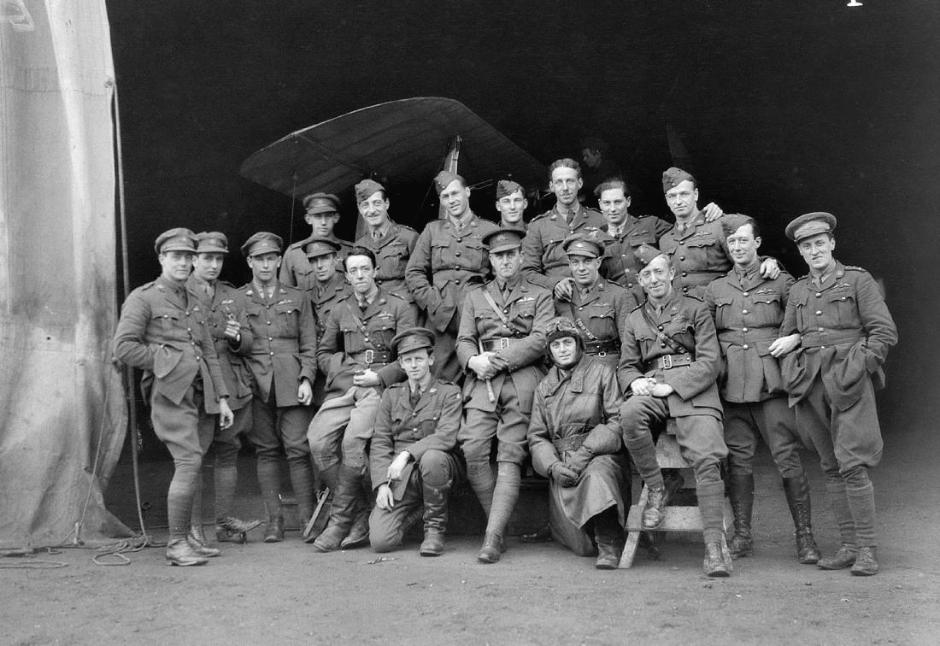
Group portrait of Lieutenant Colonel (Lt Col) Watt and officers of the 68th Squadron, Australian Flying Corps, at Baizieux, after the fighting at Cambrai. Left to right, back row: Lieutenant (Lt) L. F. Loder; Lt T. Grant; Captain (Capt) L. H. Holden MC; Capt R. W. Howard MC; Lt L. Benjamin; Capt W. A. Robertson; Lt A. Pratt. Front row: Lt C. C. Sands; Lt H. Taylor MC MM; Lt L. S. Truscott; Lt F. A. Power (partially obscured); Lt P. H. Lawson; Lt D. C. Allardice; Capt H. G. Forrest DFC; Lt Col W. O. Watt OBE; Lt L. R. Clark; Capt G. C. Wilson MC DCM. Kneeling: Lt W. A. Turner; Capt F. G. Huxley MC.
Courtesy Australian War Memorial. ID Number: E01434 Maker: Unknown. Place made: France: Picardie, Somme, Baizieux. Date made: 7 December 1917: All pages in Pittwater Online News on Oswald Watt listed under: Pittwater Reserves: The Green Ways Bilgola Beach - The Cabbage Tree Gardens and Camping Grounds - Includes Bilgola - The Story Of A Politician, A Pilot and An Epicure by Tony Dawson and Anne Spencer
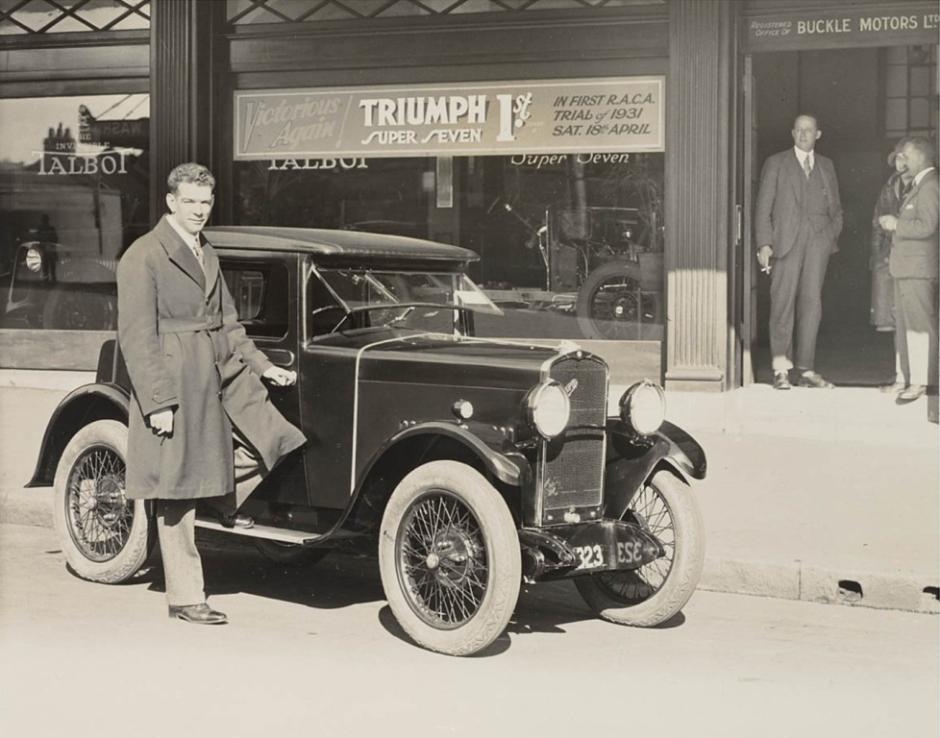
Above: C.T.P. Ulm taking delivery of Triumph car (Mrs Ulm in doorway with Mr Bill Buckle), 1931- Digital Order Number: a1269007, courtesy State Library of NSW
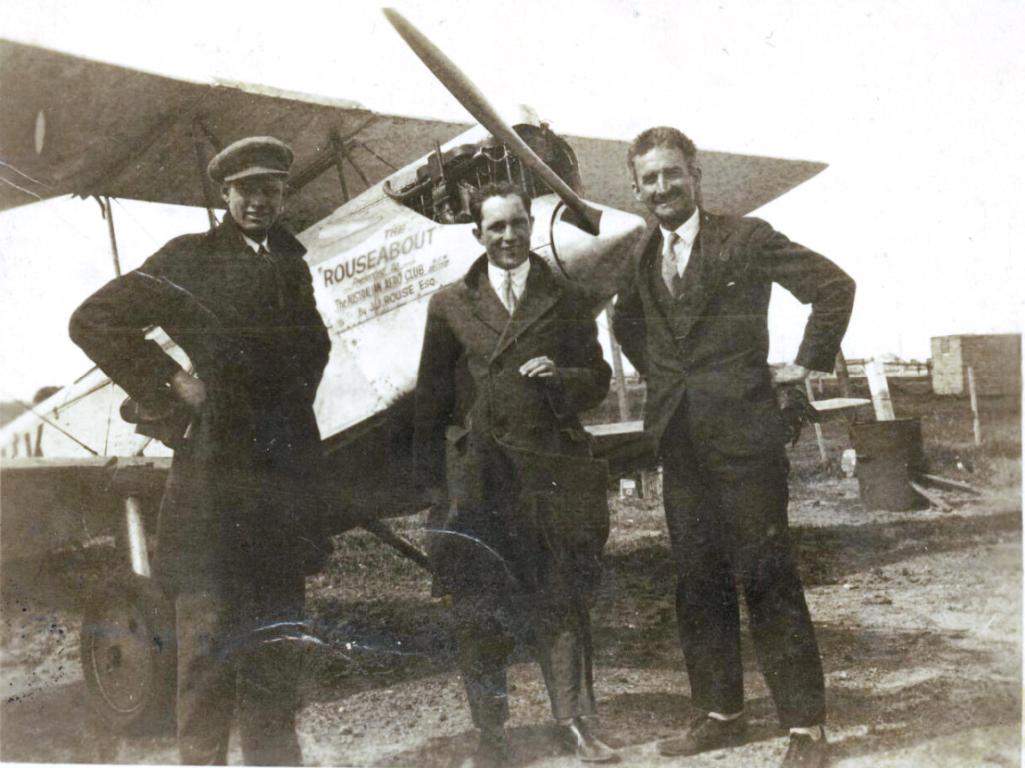
G- AUAK circa 1930 Winner of Pittwater Regatta flight races in 1934 and 1935 - same gents n Hoods pics owned by J J Rouse National Library of Australia Image from Crome Collection
Pittwater Regatta Air Race Trophies: from 1935 and 1936 - threads for article collected and collated by A J Guesdon, 2015.
Previous Collectors Corner pages:
Blacksmiths and Tinsmiths Nylon Stockings Poster Art Furphy's Water Cart Mousehole Anvil Sapphire One Armed Bandit Gould's 1840 Single and Compound Microscope Tibetan Thangka Wheel Of Life Painting Cast Iron Seats Mabel Lucie Atwell Prints The Customs of Traditional Dining by Hans and Jenny Carlborg Albert Collins Landscape Boomerang Harmonicas Drinking: 18th Century Style Part I by H&J Carlborg Drinking 18th Century Style Part II by H&J Carlborg Fleece Shears Wood Case Crank Telephone 1803 Timepeice Vintage Guitars Milestones No.38RollsRoyceMotorOiler Christmas Postcards Seashells McCormick-Deering Horse Drawn Mower Rope Making Machine Marilyn Monroe 1955 Calendar Stubbie Holders Hill's Hoist Akubra Hat Fowler's Bottling Kit The Bold Autographed Script Fishing Tackle Arnotts Biscuit Tins Comic Books Silver Opium Pipe Mrs Beetons Book Souvenir Teaspoons Bendigo Pottery Gianelli Figurines Key Fobs Model Aircraft-static Porcelain Slippers Wagon Wheels Rhys Williams Painting Chinese Guardian Lions Australian Halfpenny Bud Vases Rolling Stones Still Life LP Autographed WL1895 Thinking Monkey Estee Lauder Ginger Jar Reel Mowers Surf Reels Millers Car Collection Hilton Lingerie - Slips Miniature Books of Verse - A Romantic Tradition REGA Pouring Can R O Dunlop - Sailing At Itchenor Painting Morning Shadows by C Dudley Wood The Father of Santa Claus - Xmas 2012 HMS Penguin Anchor at RPAYC - Newport SS Birubi Mast at RMYC - Broken Bay Helen B Stirling Ship's Wheel at Club Palm Beach Woomeras HMSEndeavour Replica Cannon at RPAYC The Doug Crane Classic Handmade Double Blade Paddle HMS BountyWooden Ship Model Collecting Ladies - Ferdinand Von Mueller and Women Botanical Artists Australian Bark Art Chinese Ginger Jars Hand Plough and Jump Stump Plough - Australian Inventions Frank Clune Books Frederick Metters - Stoves, Windmills, Iron Monger Trinket Boxes 1933 Wormald Simplex Fire Extinguisher is Pure Brass Chapman 'Pup' Maine Engines - Chapman and Sherack The Beach Ball Figureheads Salty Wooden Personifications of Vessels Binnacle at RMYC The Australian Florin - Worth More Than 20 Cents to Collectors Weathervanes; For Those Passionate About Seeing Which Way the Wind Blows Her Majesty's Theatre 1962 Programme - Luisillo and his Spanish Dance Theatre Cooper's Sheep Shower Enamel Sign and Simpso's and Sons of Adelaide Jolly Drover Sugar Bowl and English Pottery A Means to Gaze into the Past Chief Joseph and Edward S Curtis; His Remarkable Images of Native Americans an Inestimable Record of Images and Portrait Photographs His Masters Voice, Old 78's and Australia's Love of Music Jack Spurlings 'Tamar' Picture 1923 Resch's Beer Art - A Reflection of Australiana Now Worth Thousands The Compleat Angler - Izaak Walton's Discourse Inspires Generations of Fishers Portable Ice-Boxes and Coolers How Many Claim This Invention as Theirs? Malley's and Sons Ltd. - A Munificent Australian Family Company Vintage Paddles and Gigs Nautical Memorabilia The Crinoline - a 550 Year Old Fashion B.B. King - King of the Blues Goes Home: a Timely look into Photographs and Autographs and Being Buyer Aware Deep Down Among the Coral - By Christopher Corr - A Limited Edition Print in Celebration of the seventy fifth anniversary of QANTAS Airways Old Chinese Rice Bowls for Marriage: Worth More Than You Think... Commanderie St. John: An Ancient Wine - From 1927 with Lineage to Cyprus in 1210/92 and Methods of Production to Greece in 800 B.C.